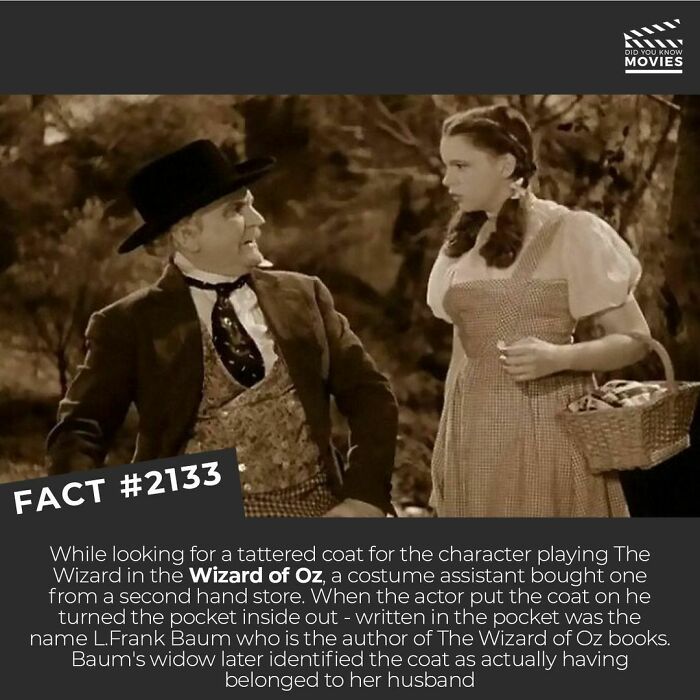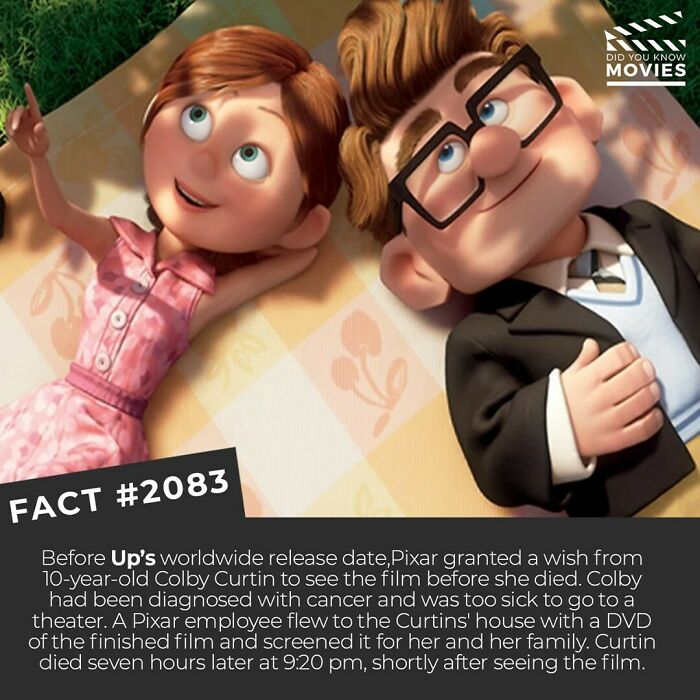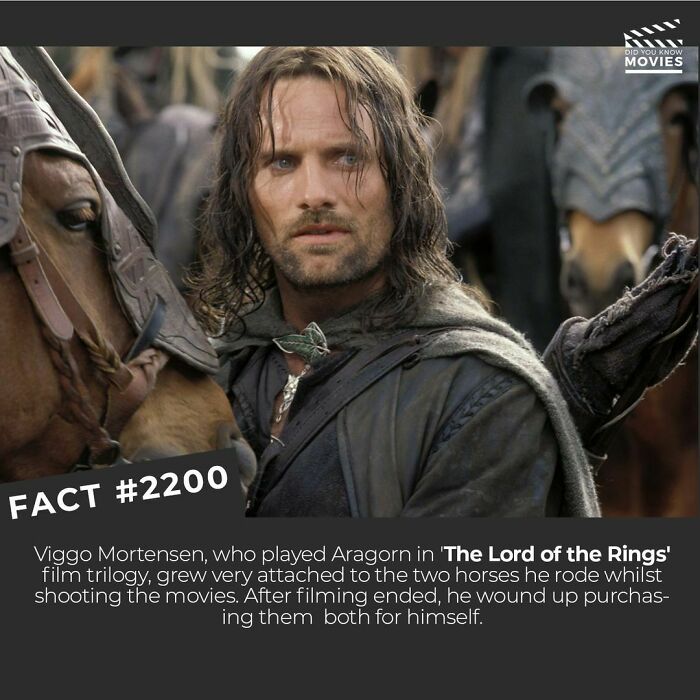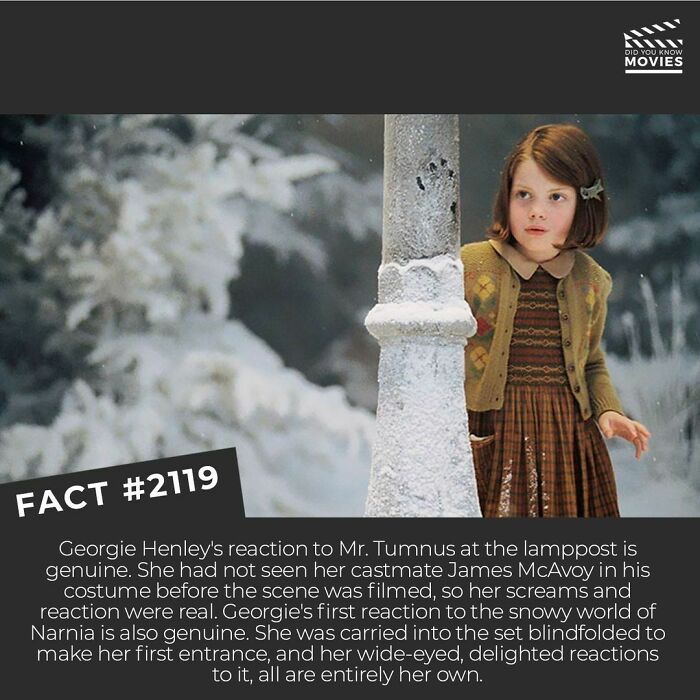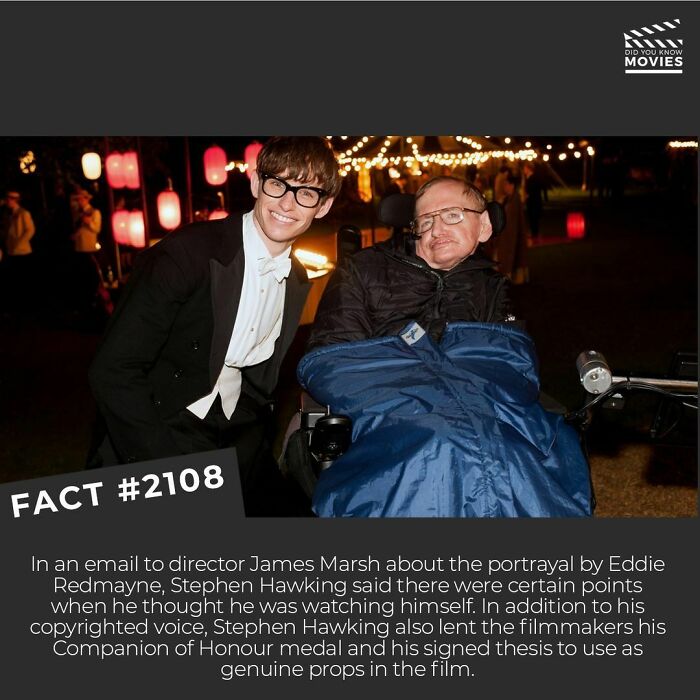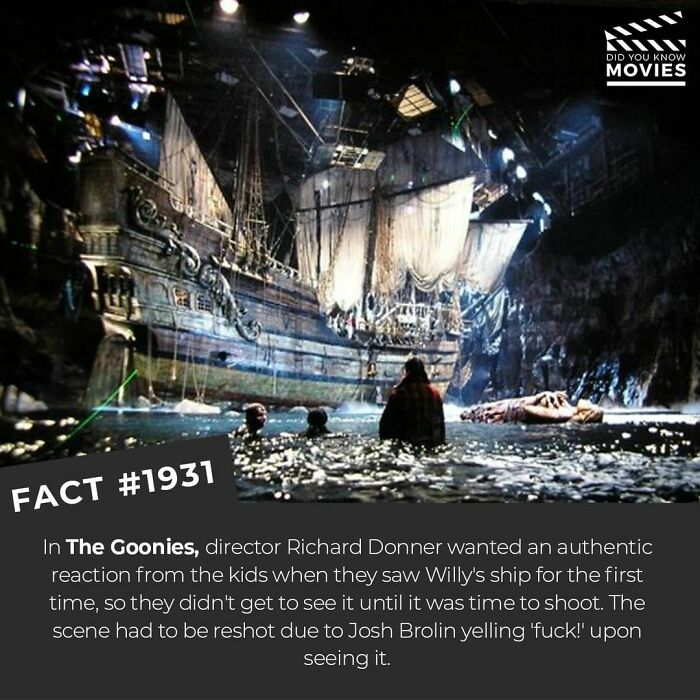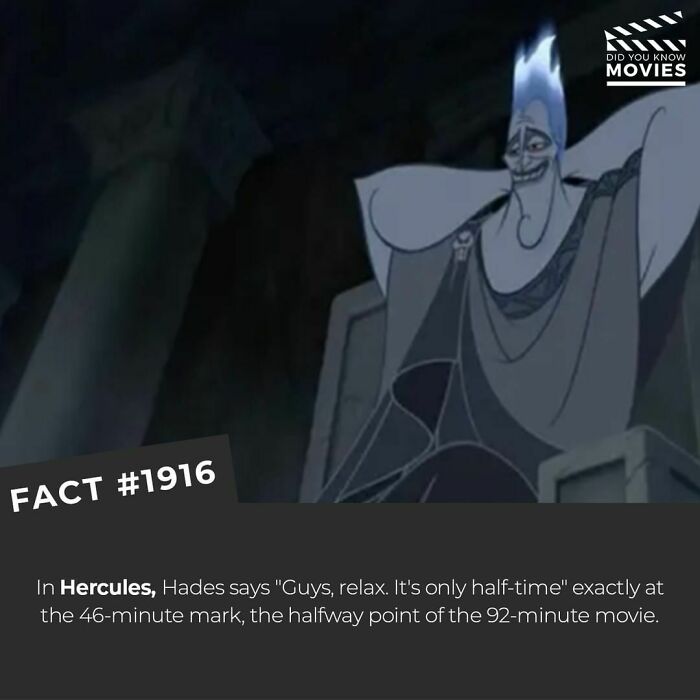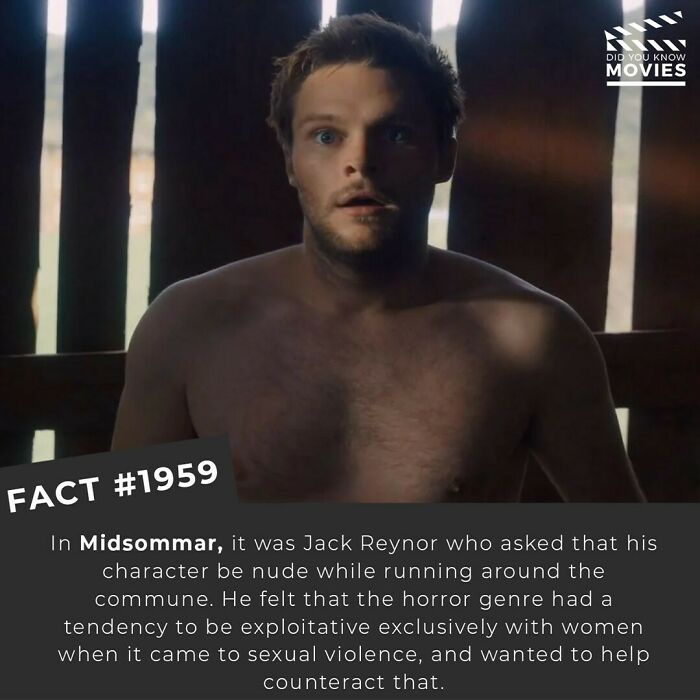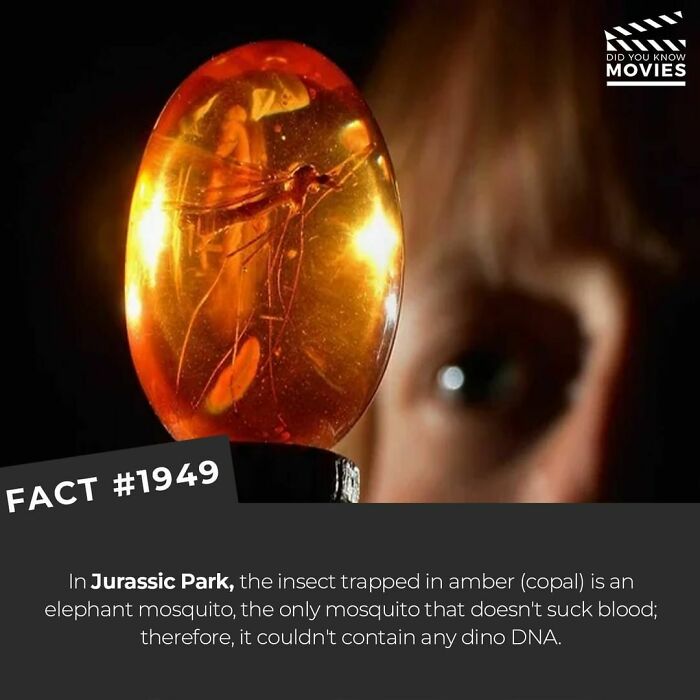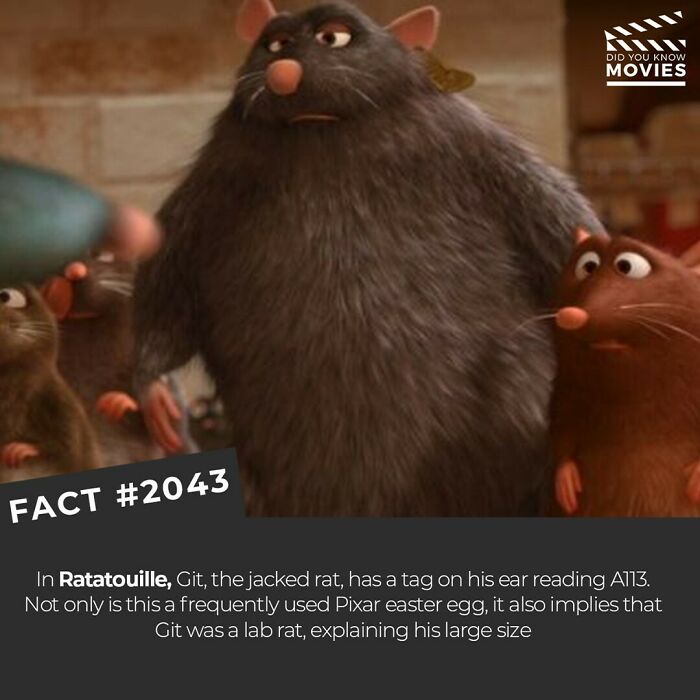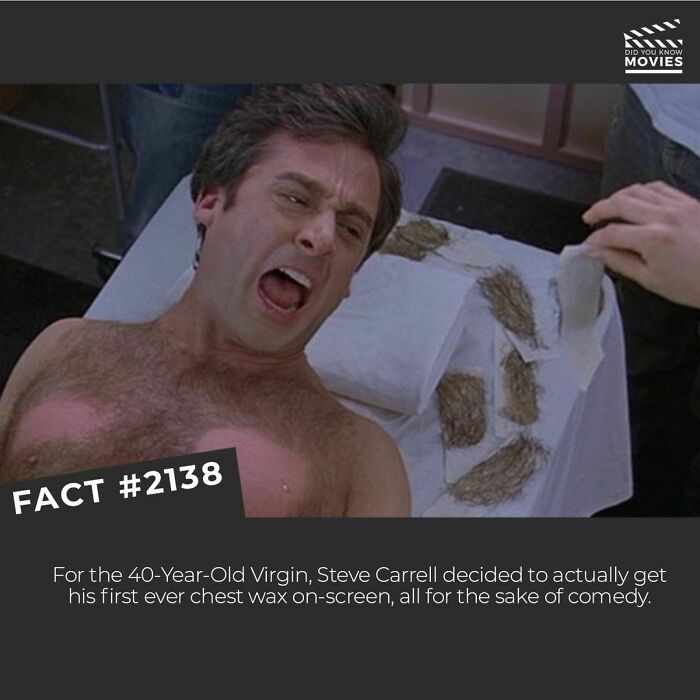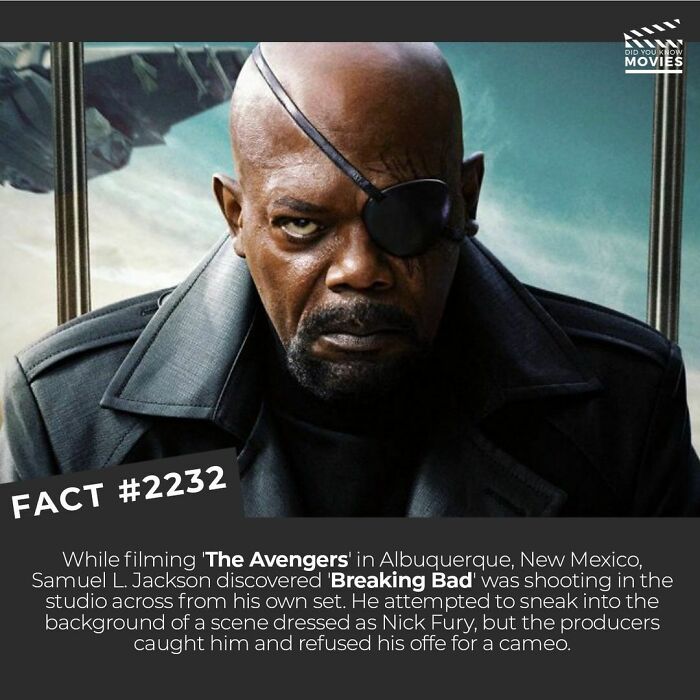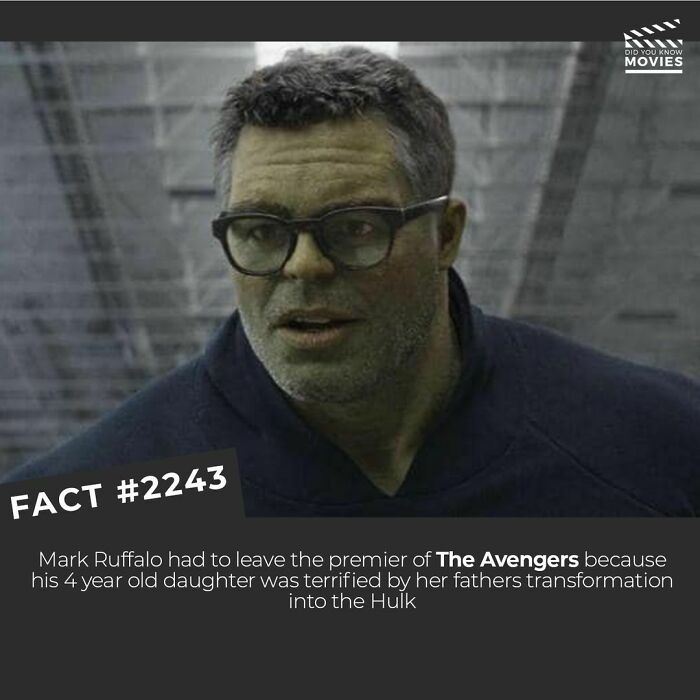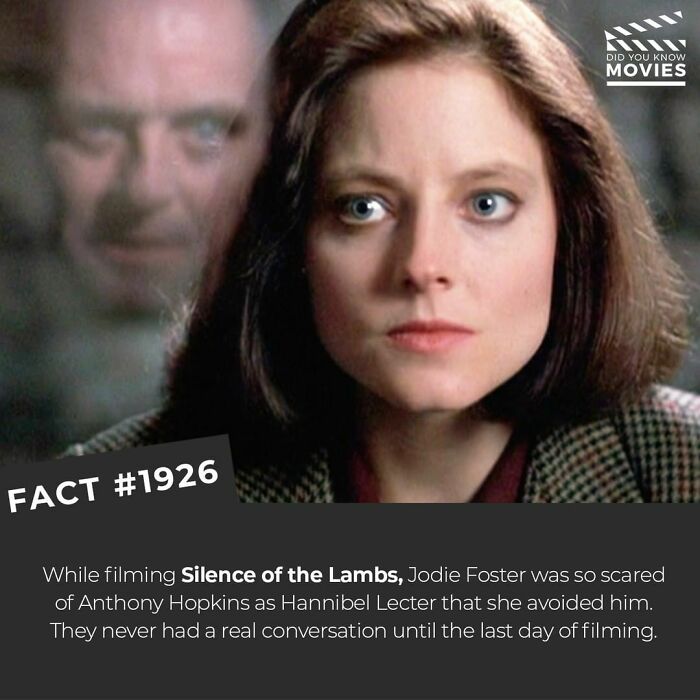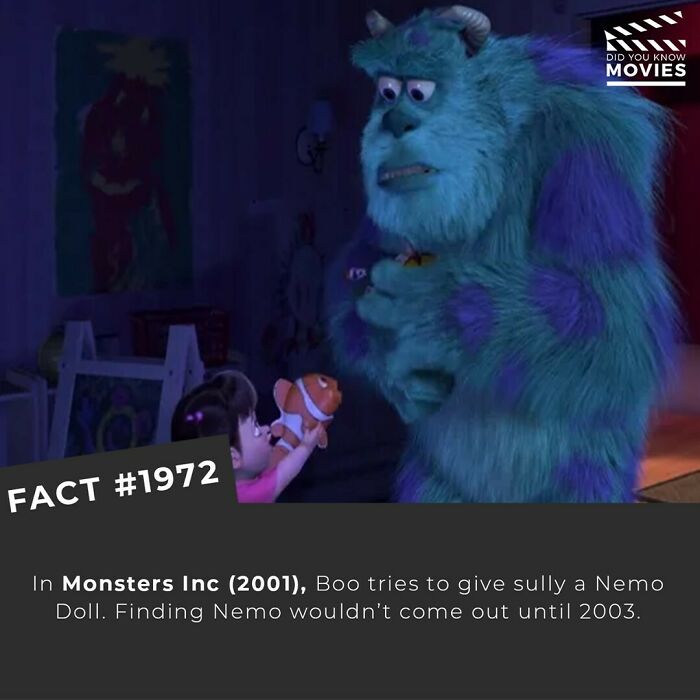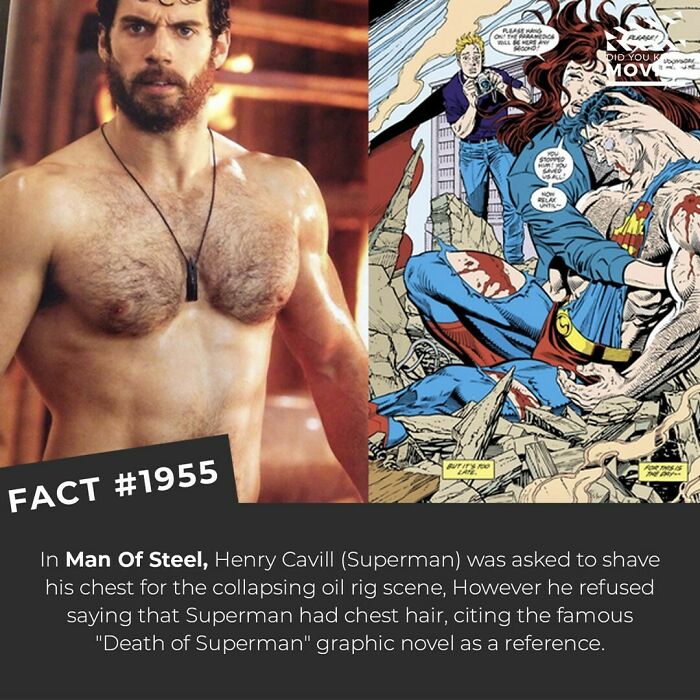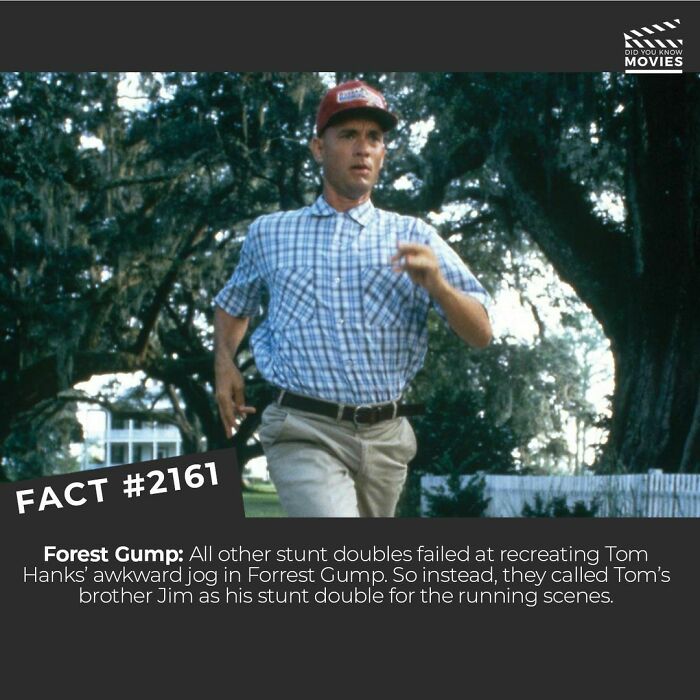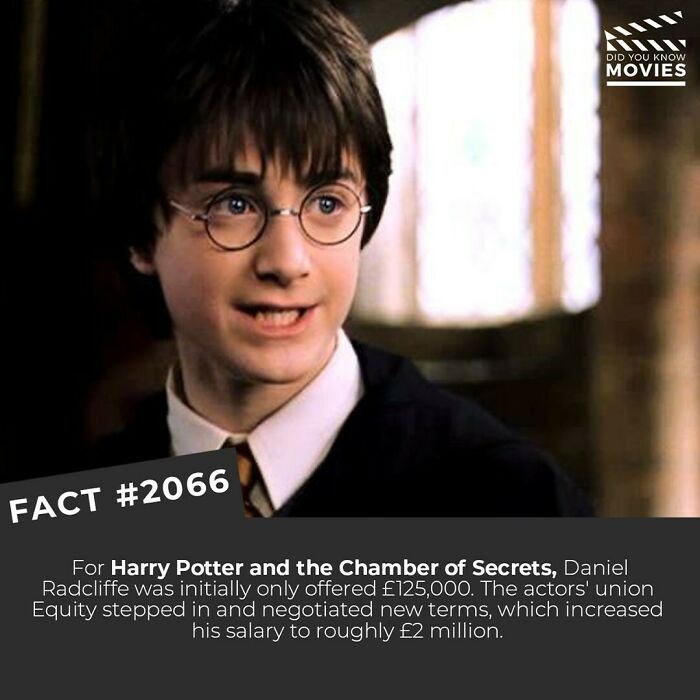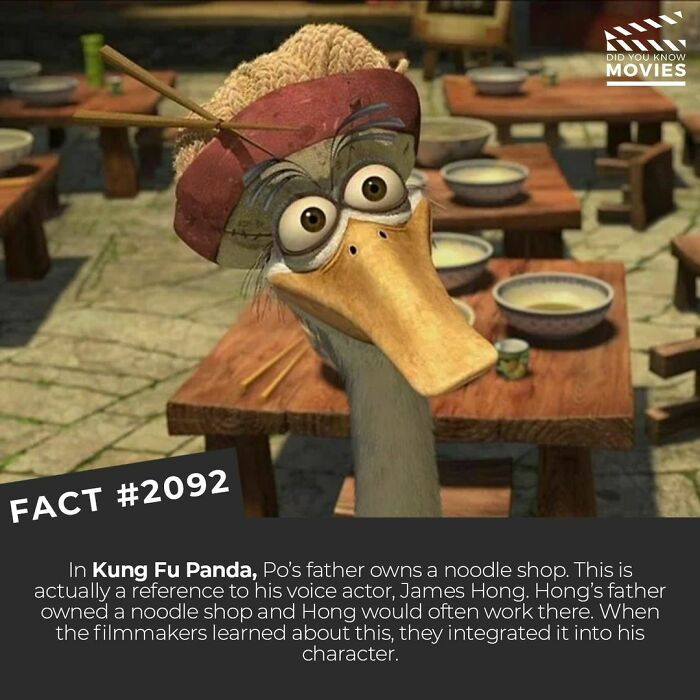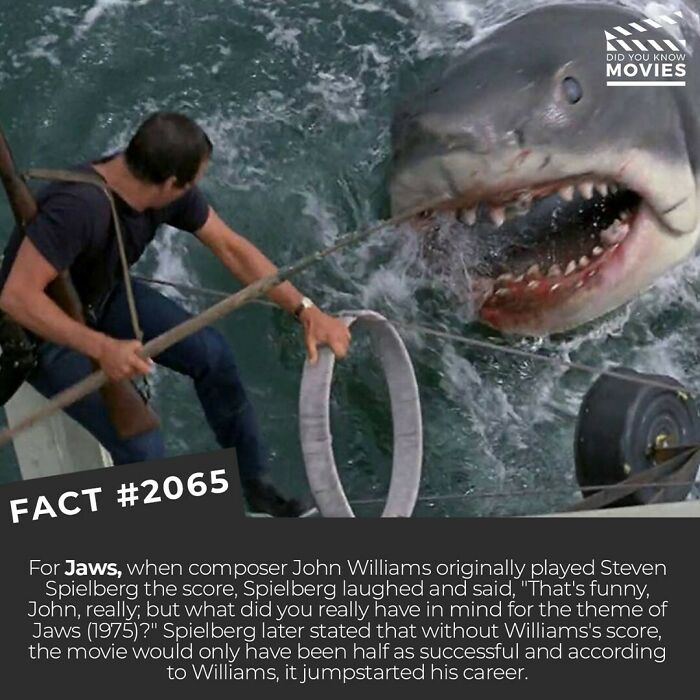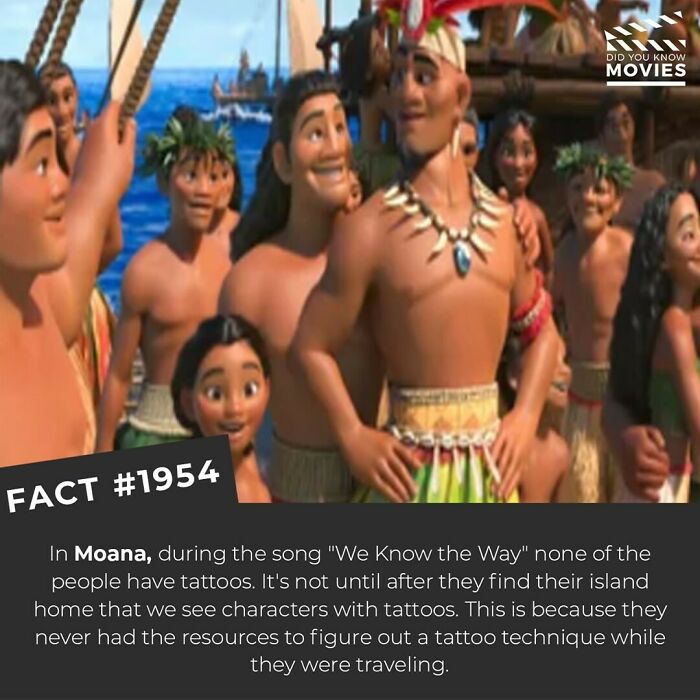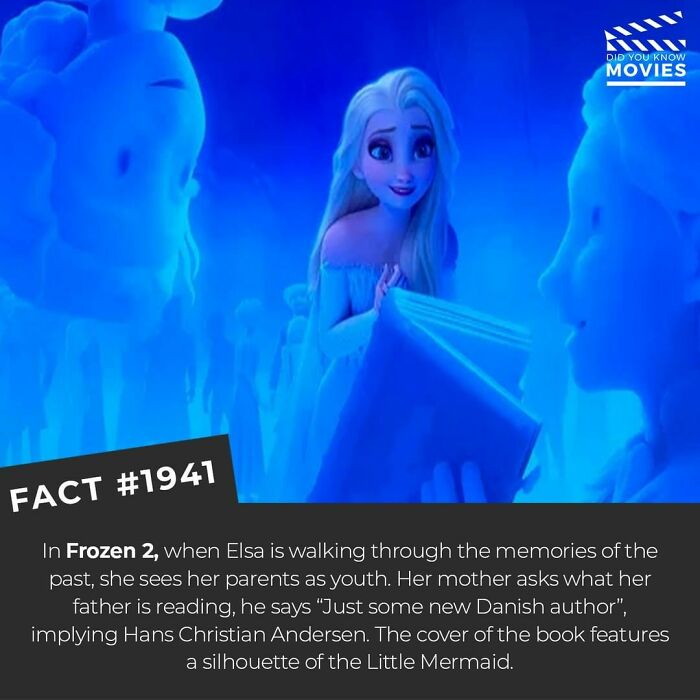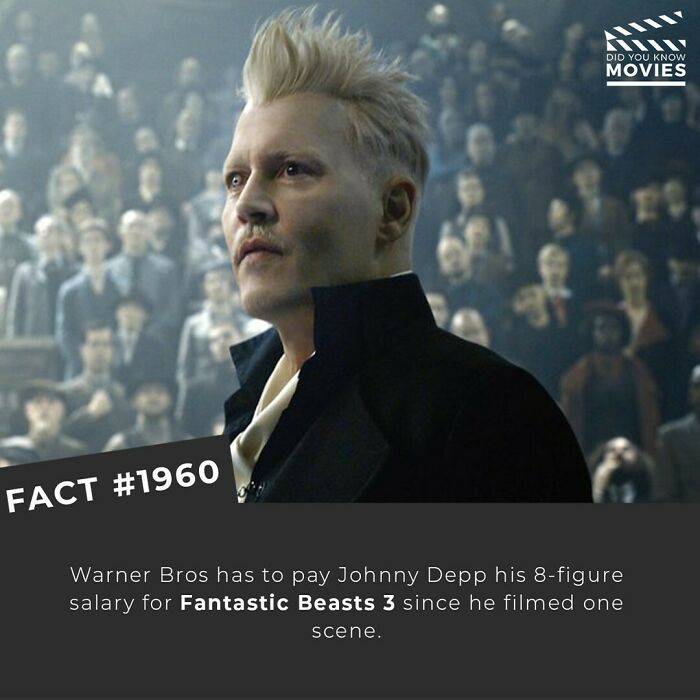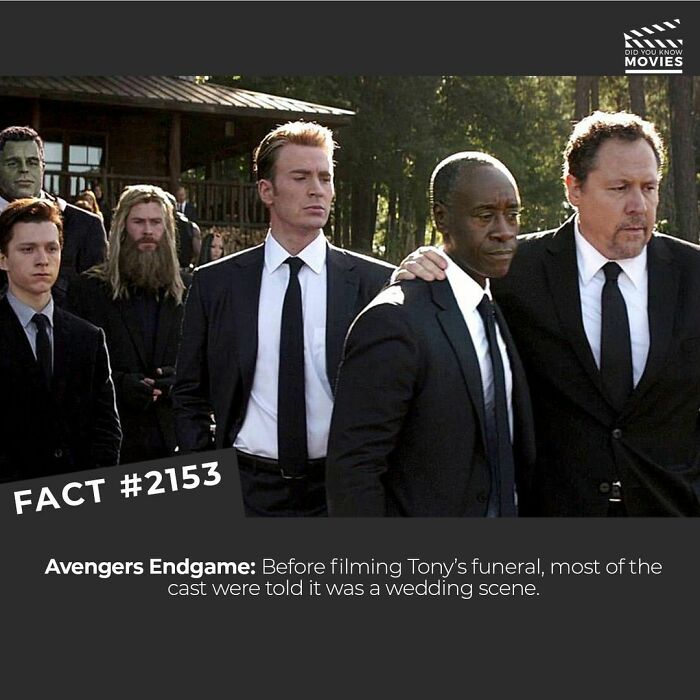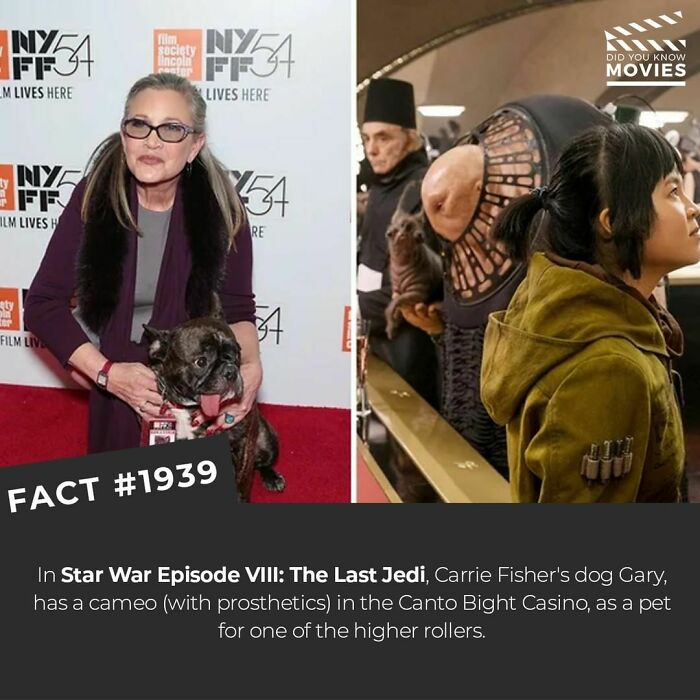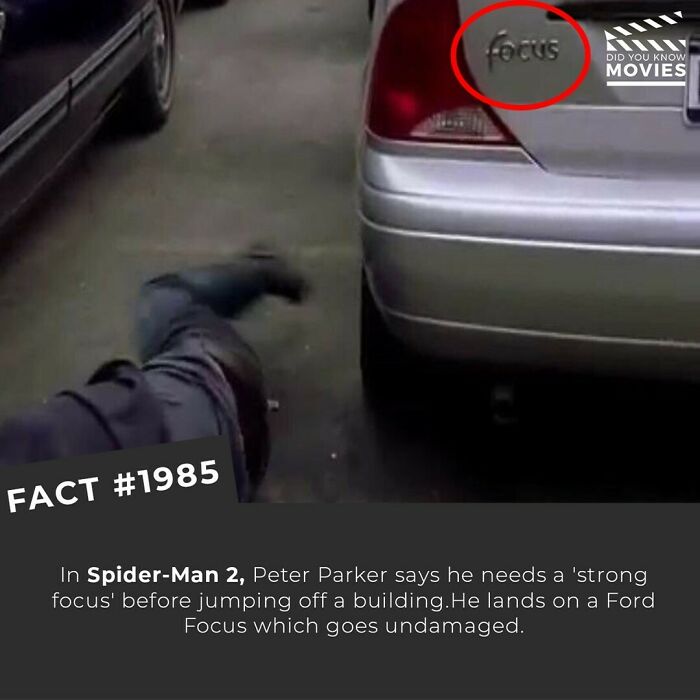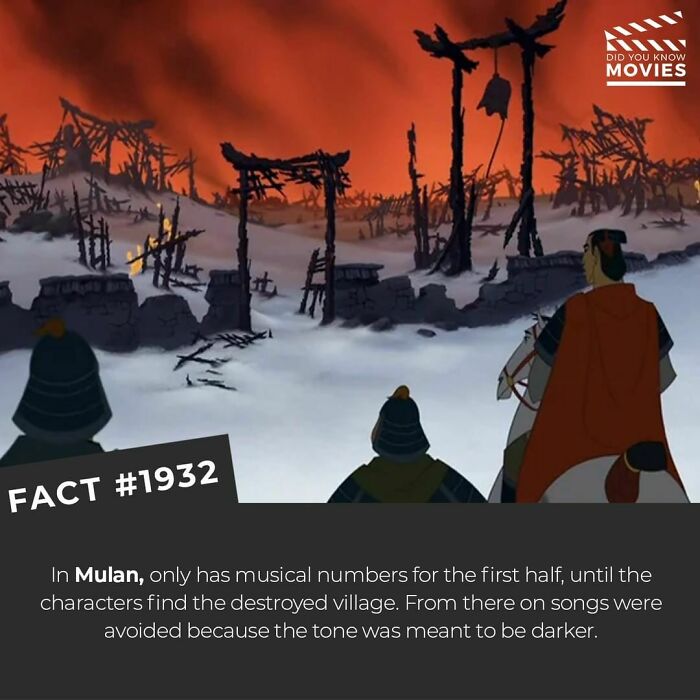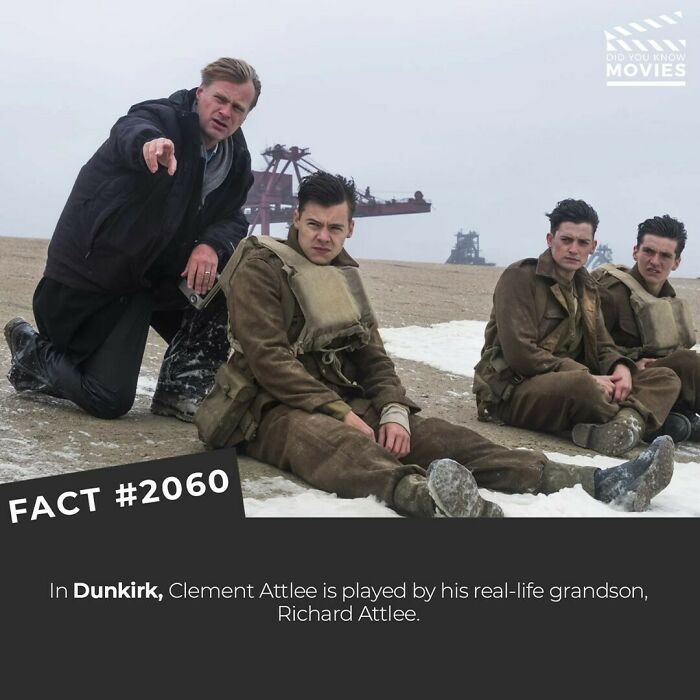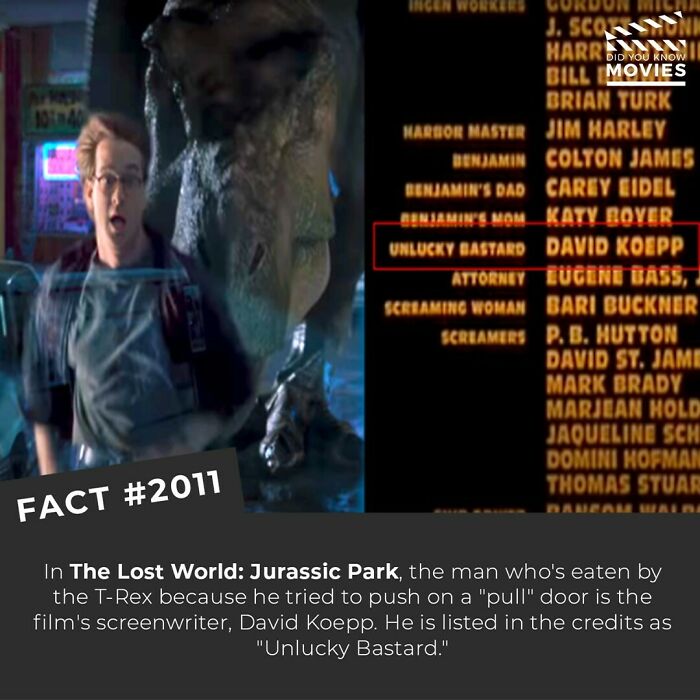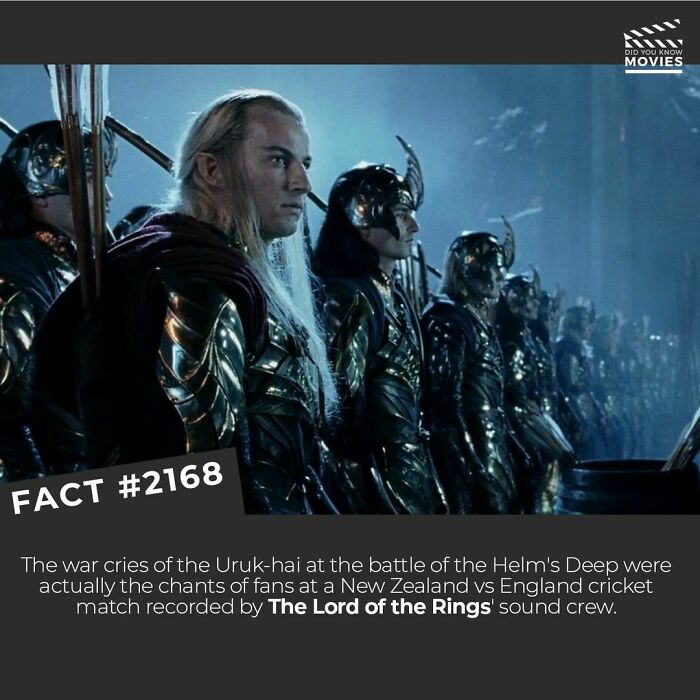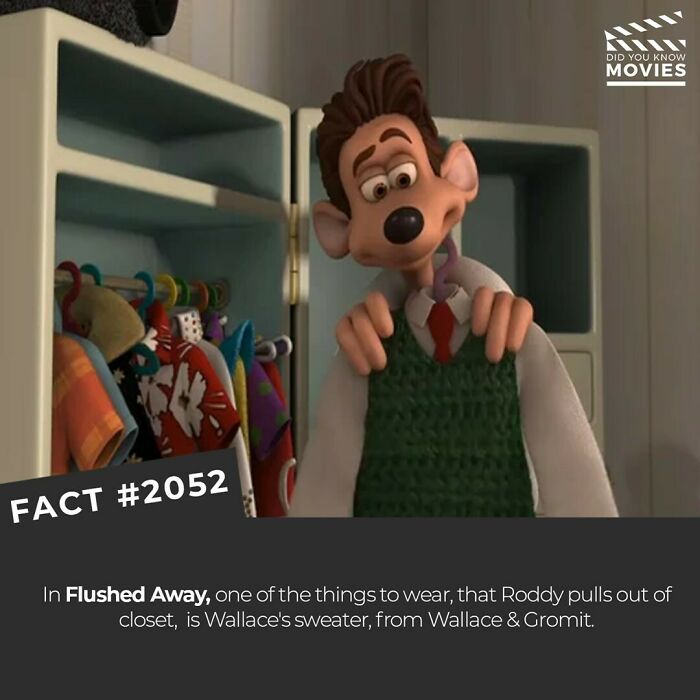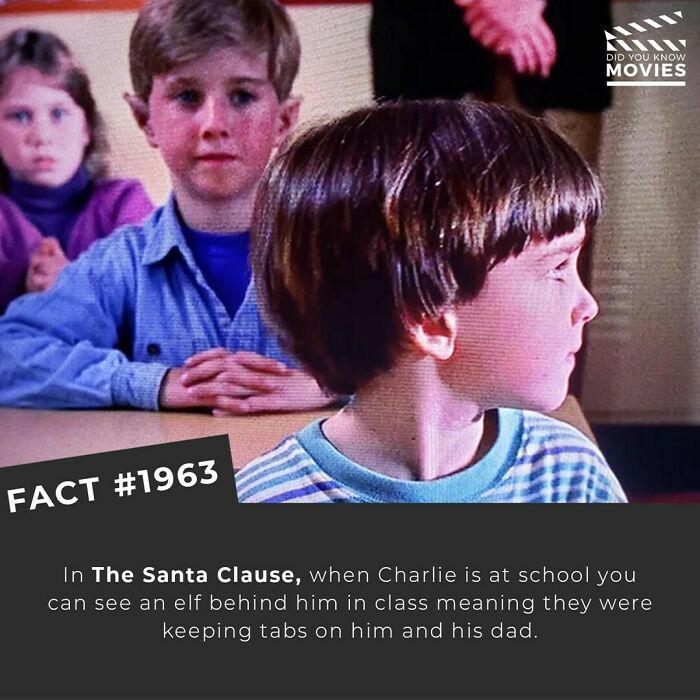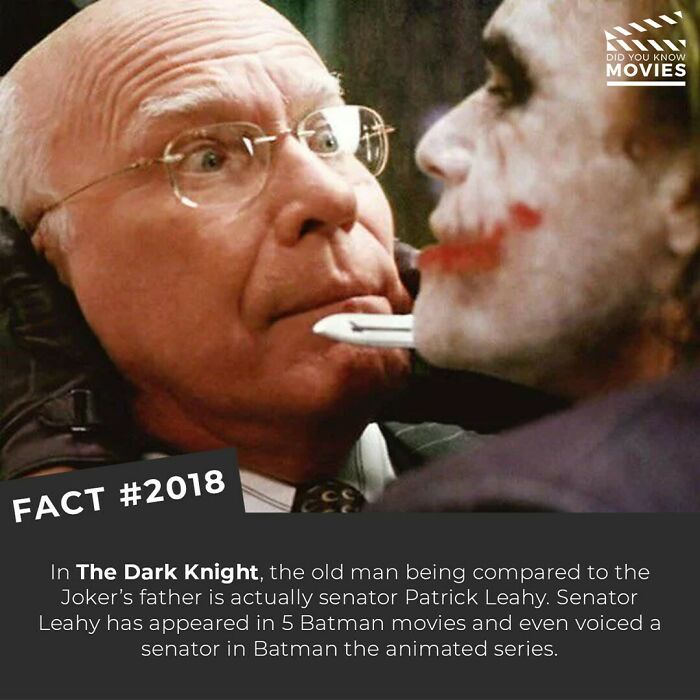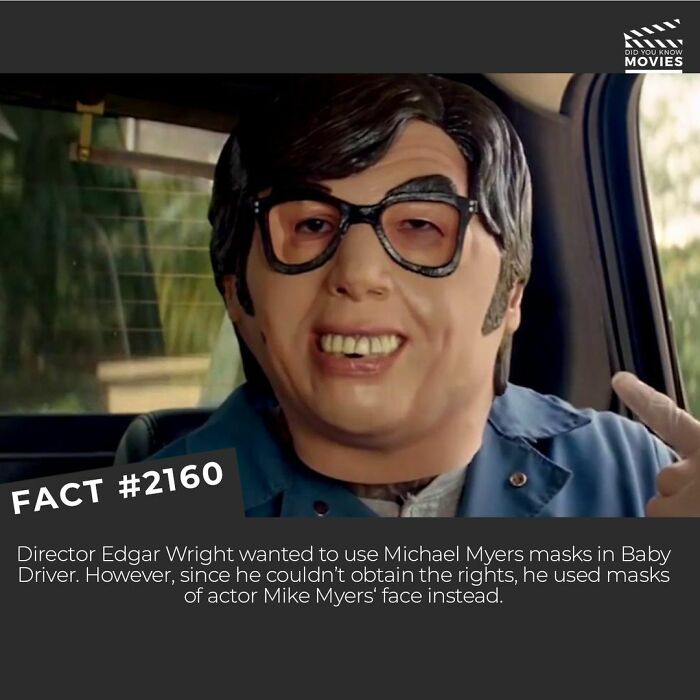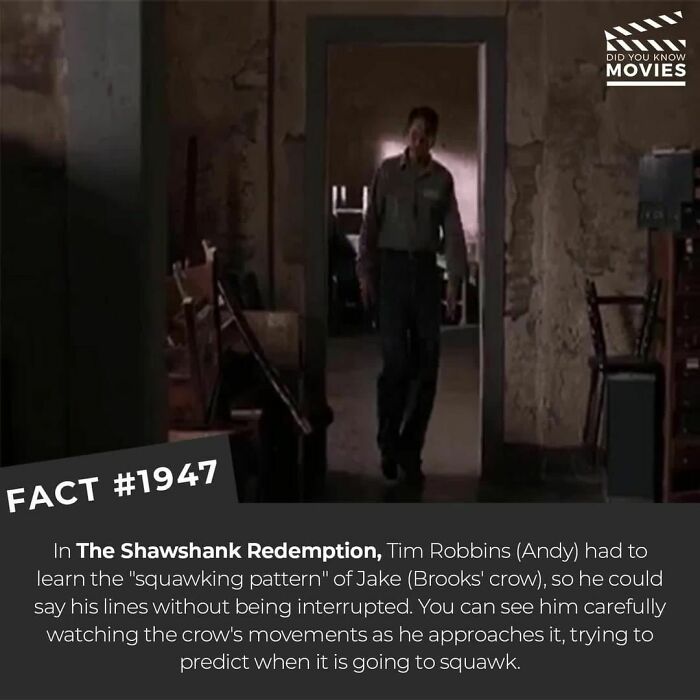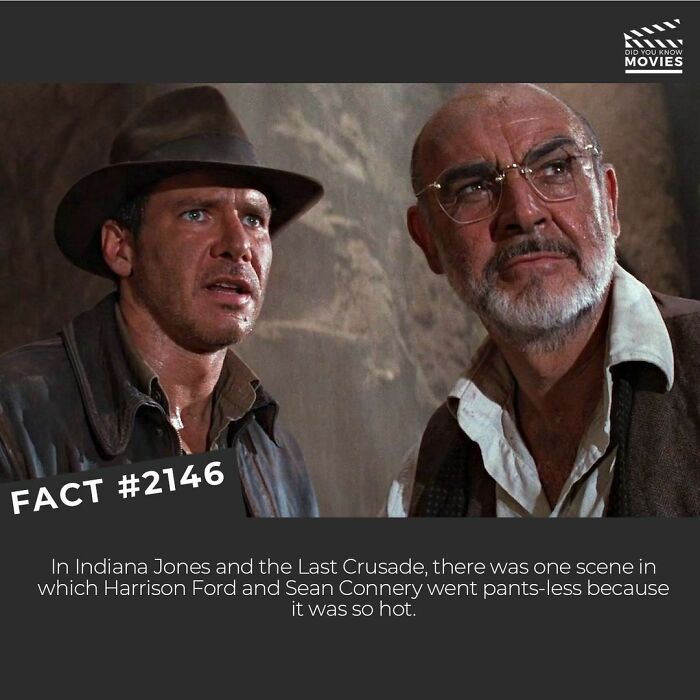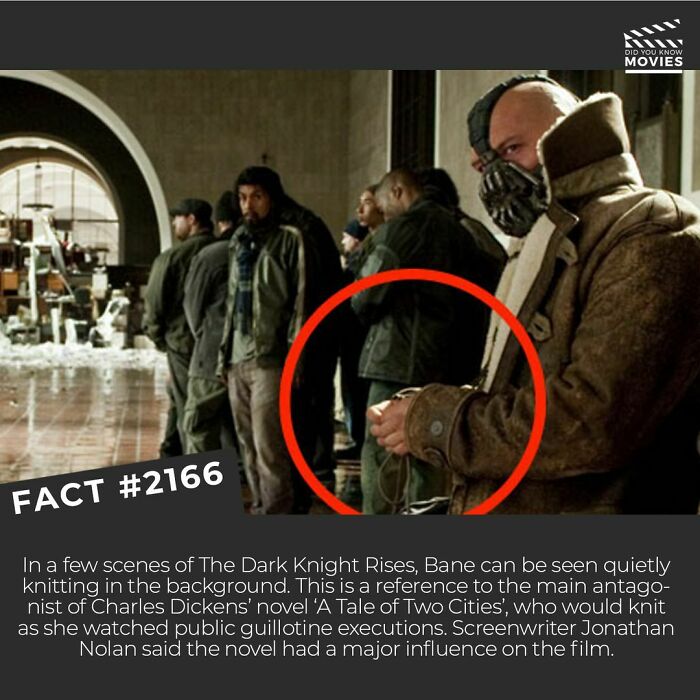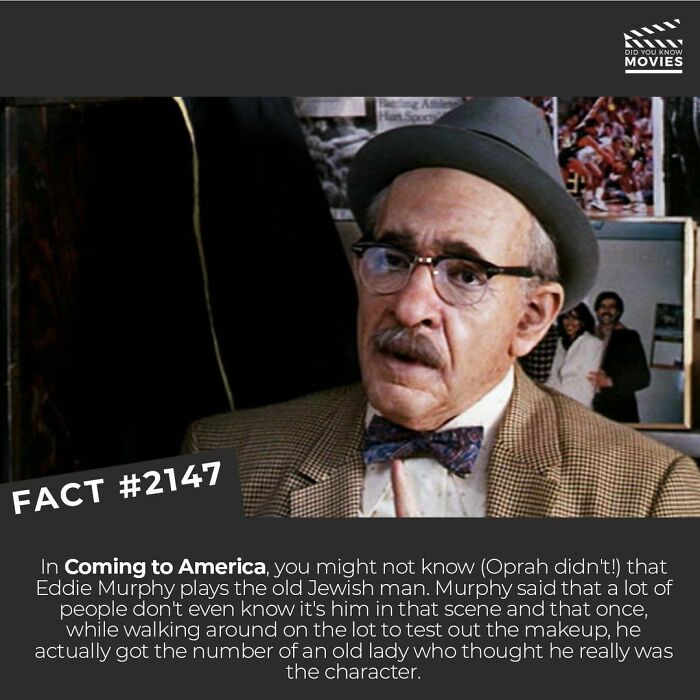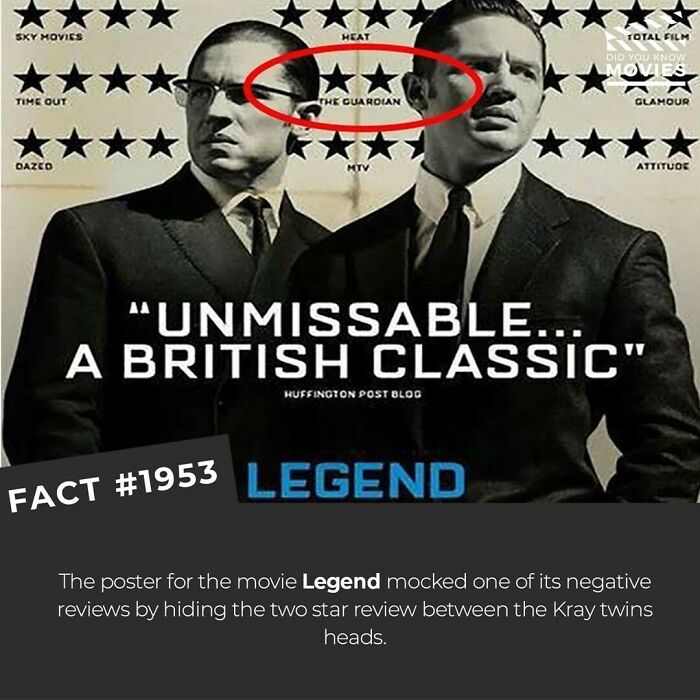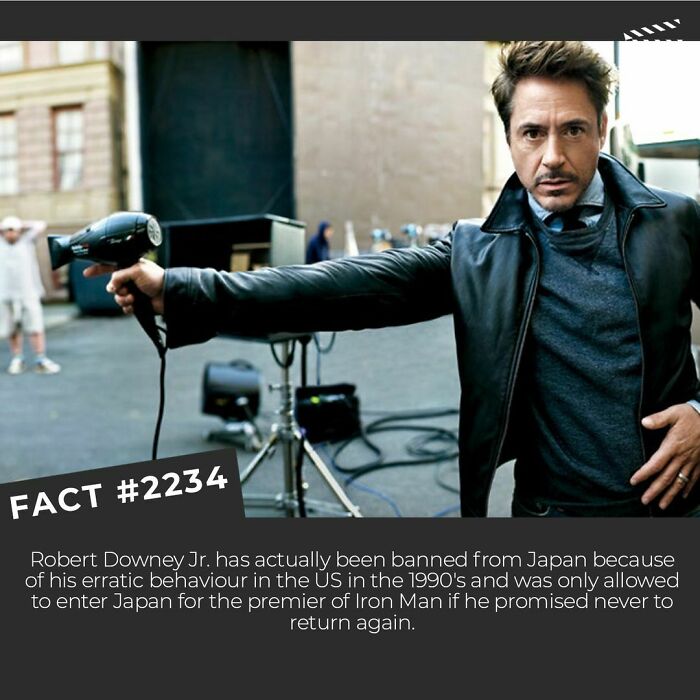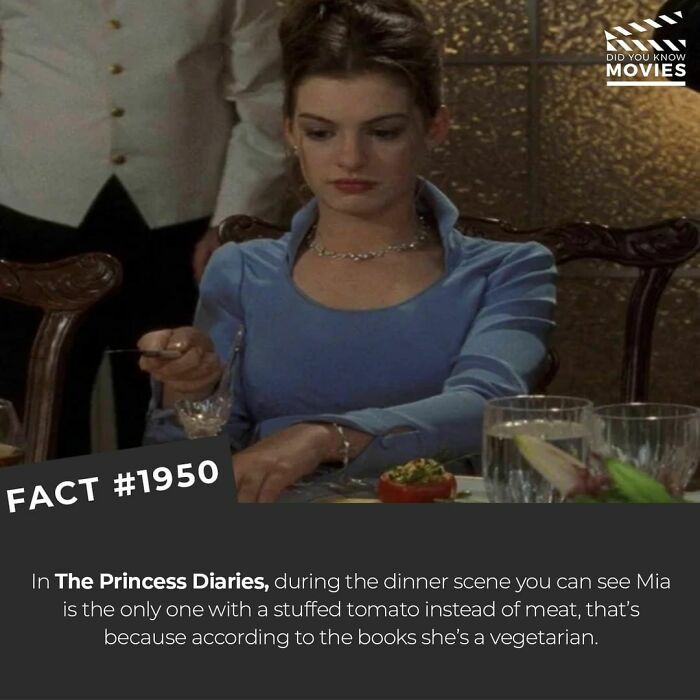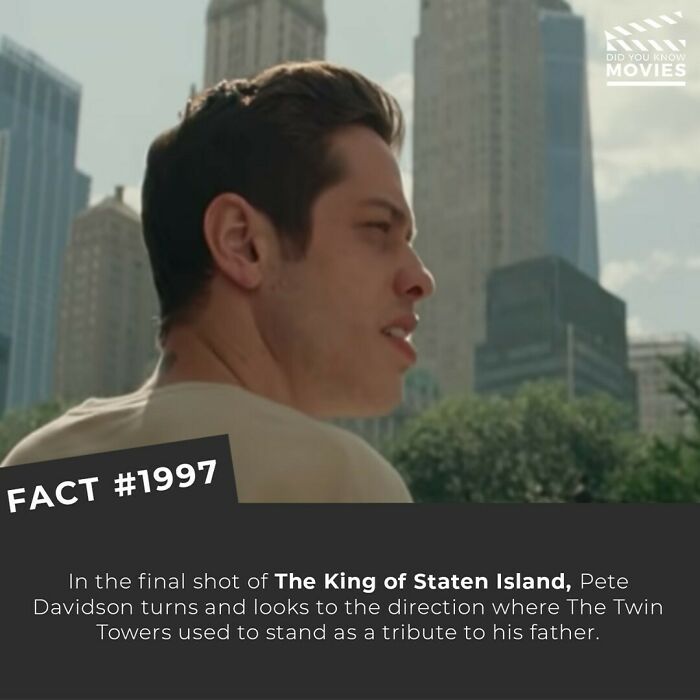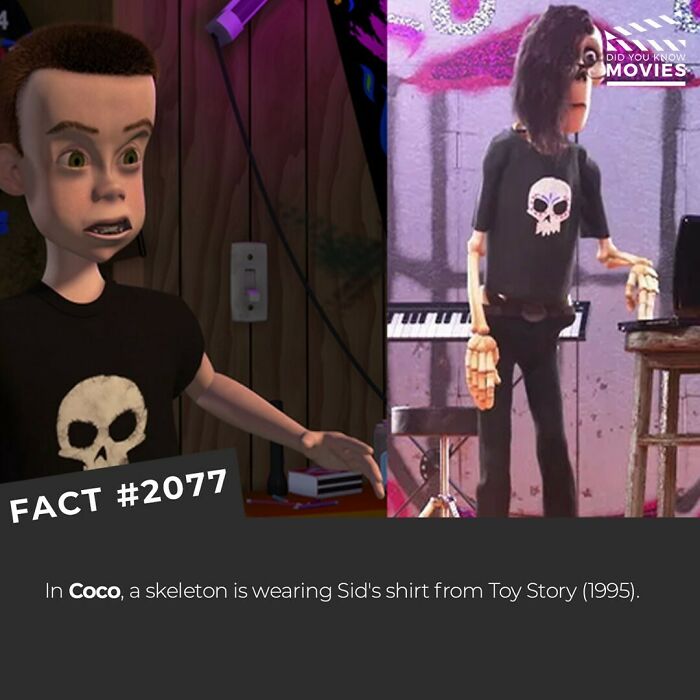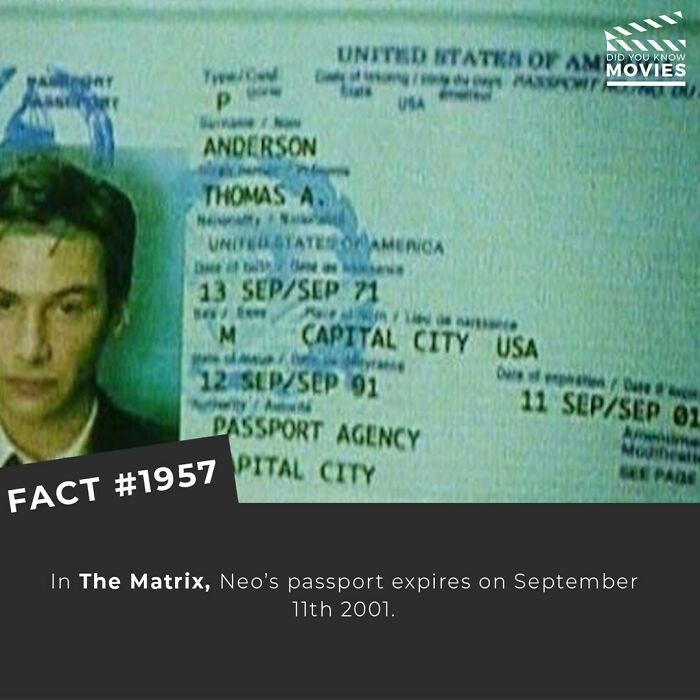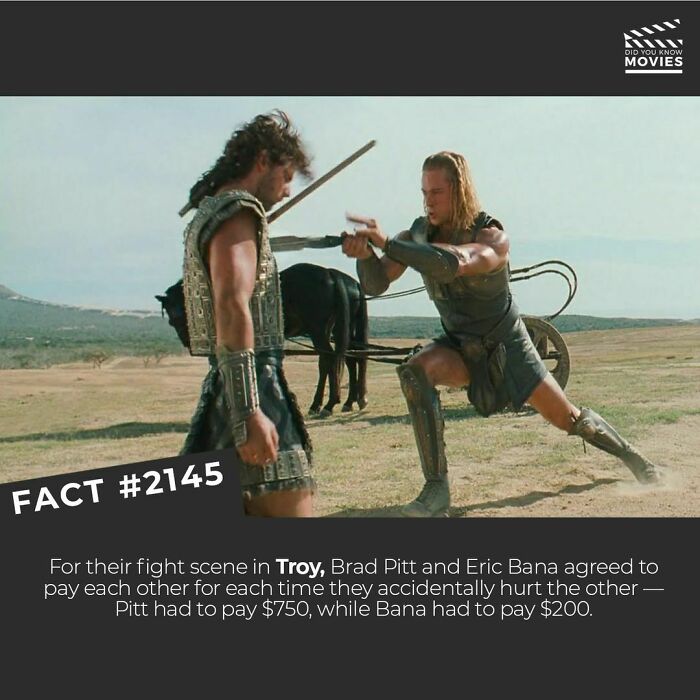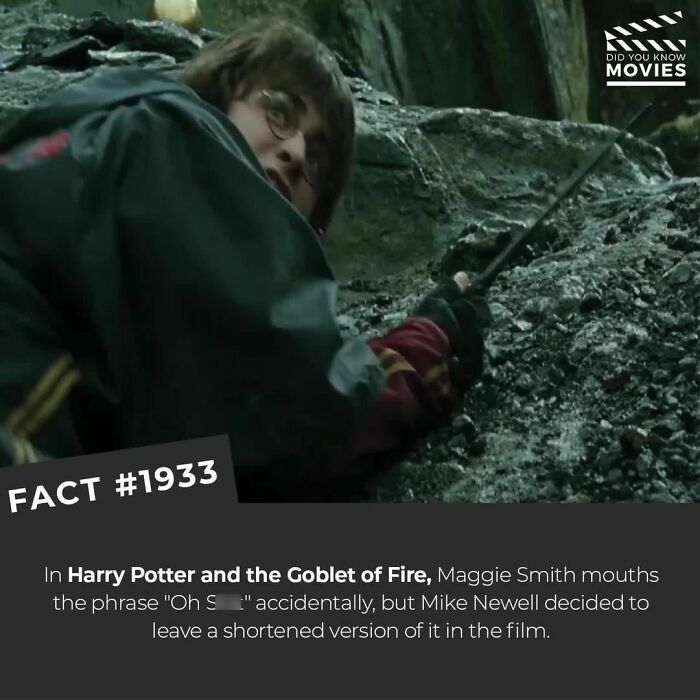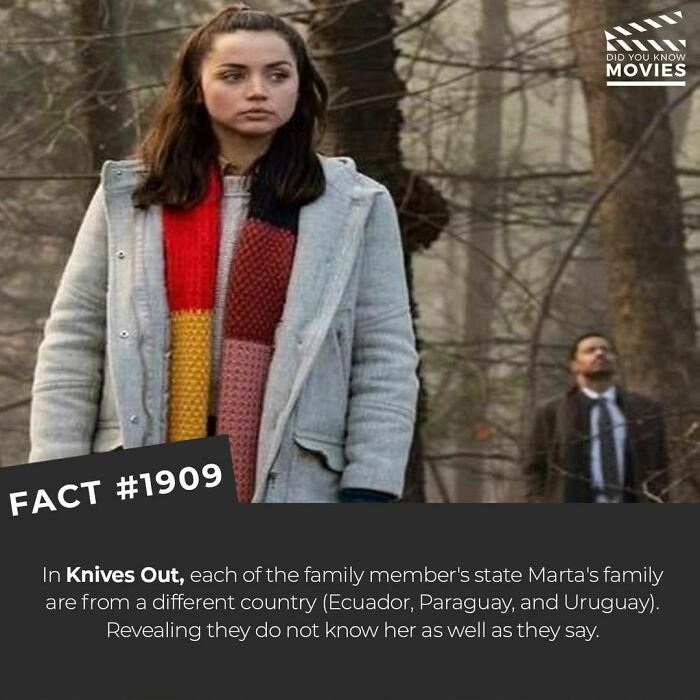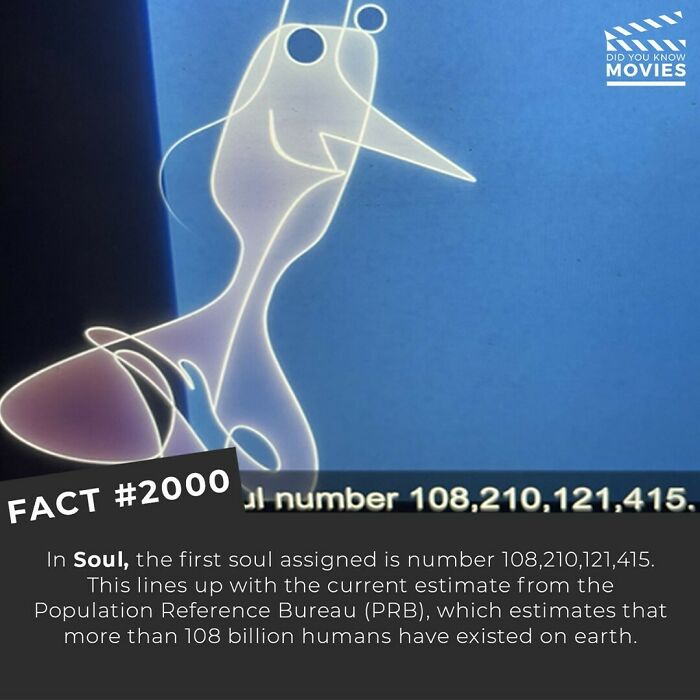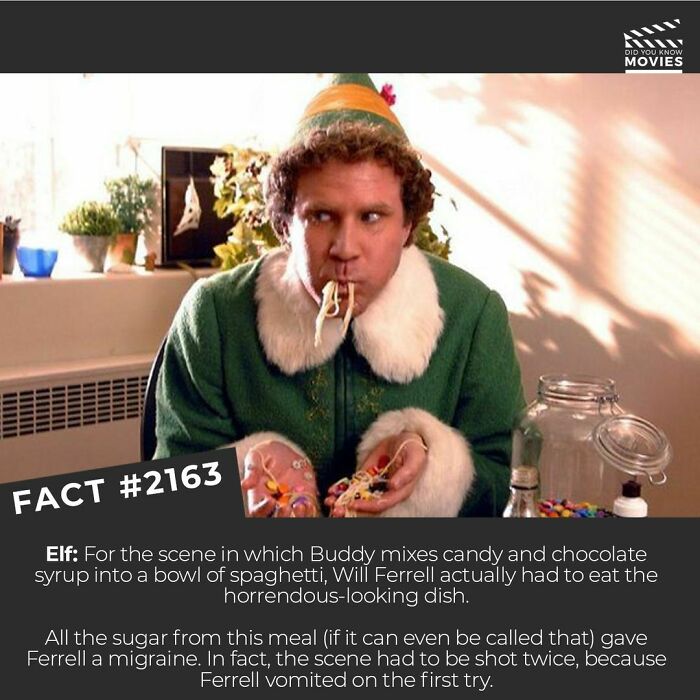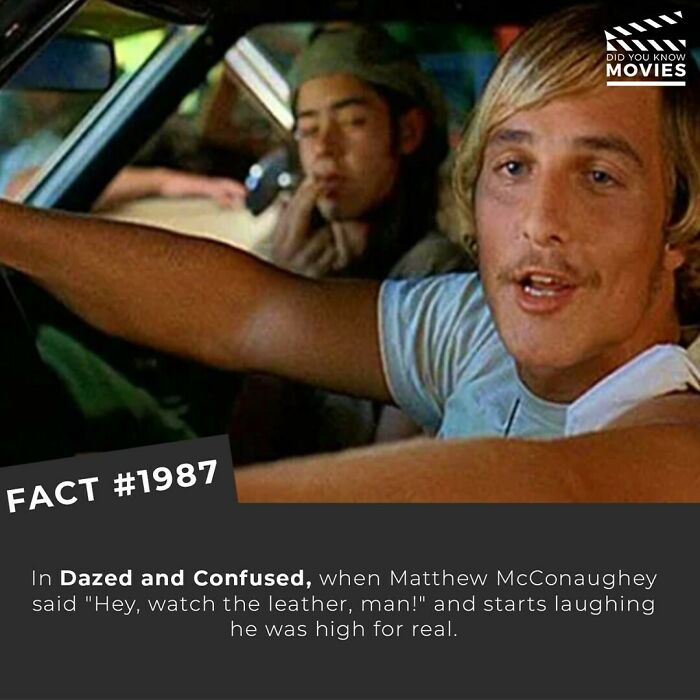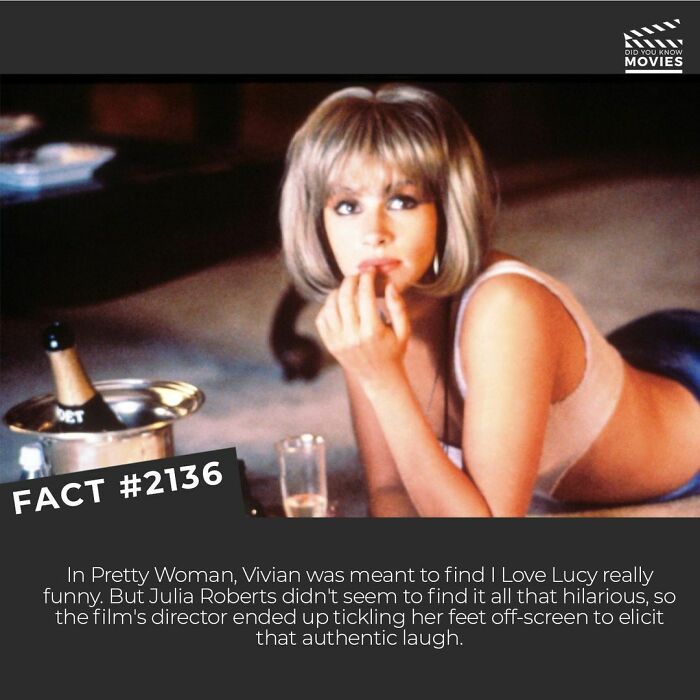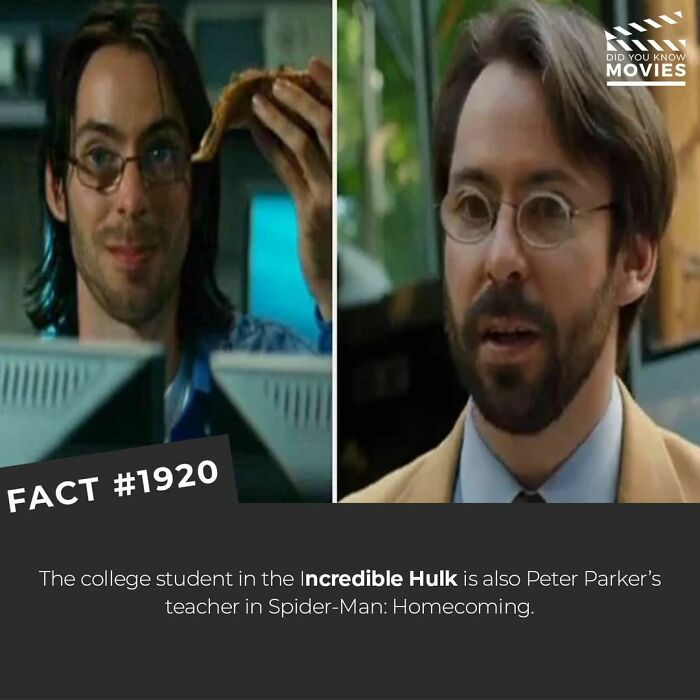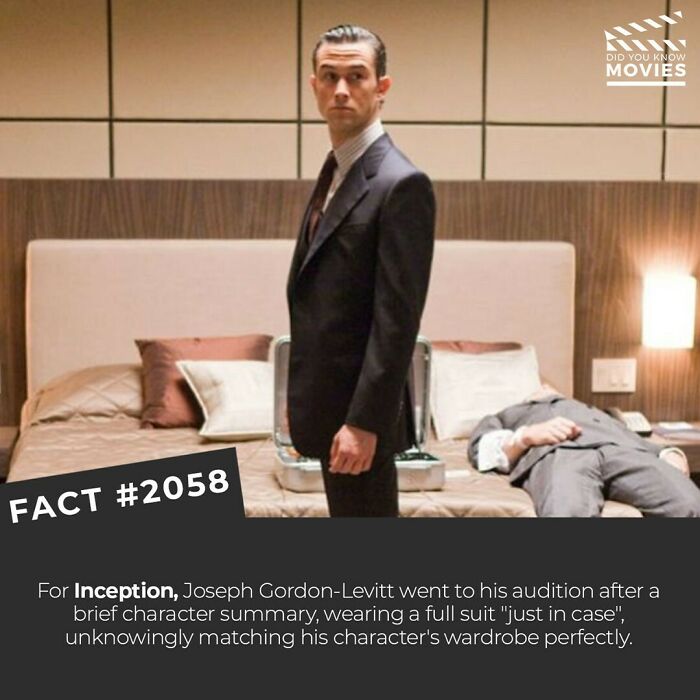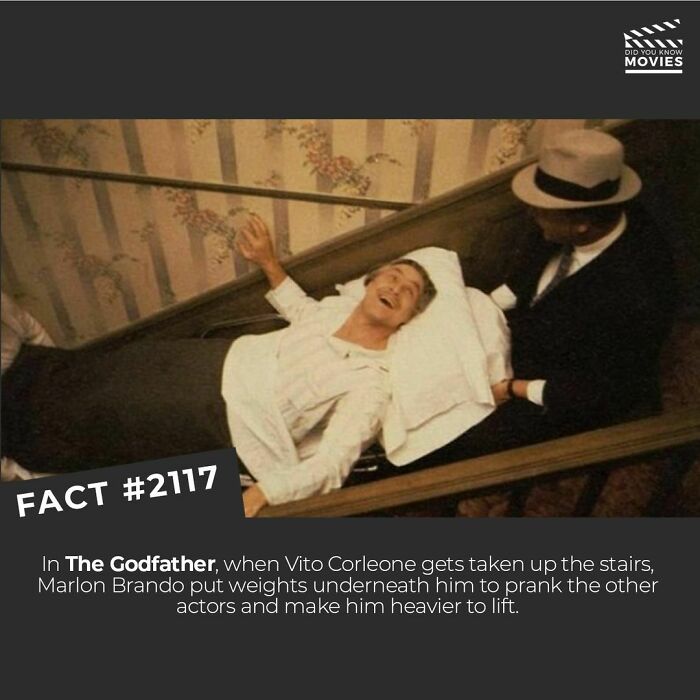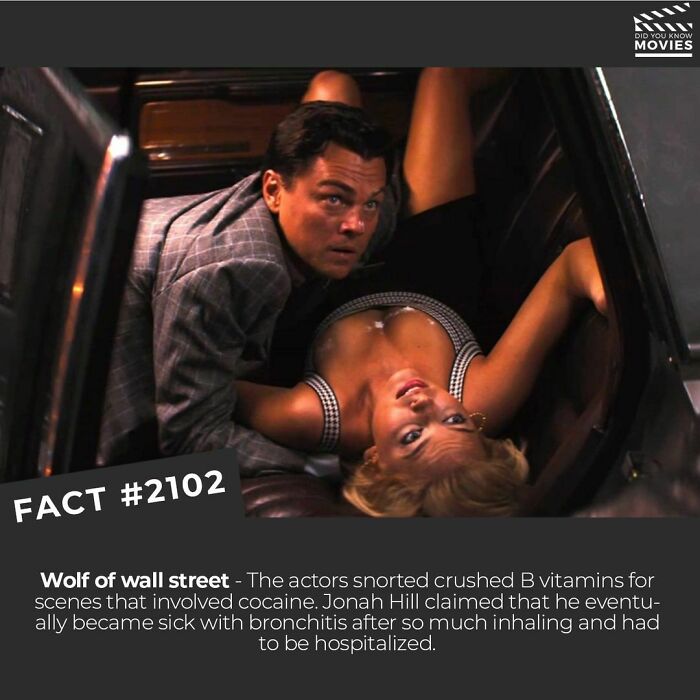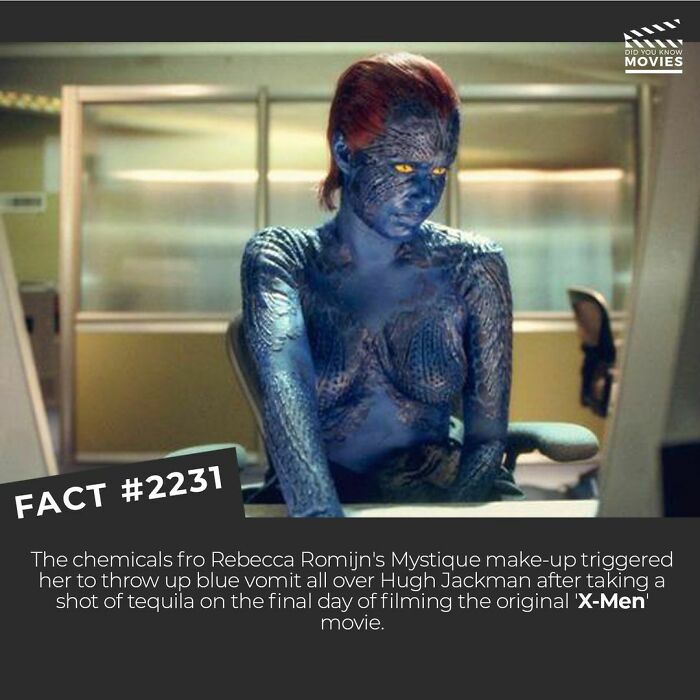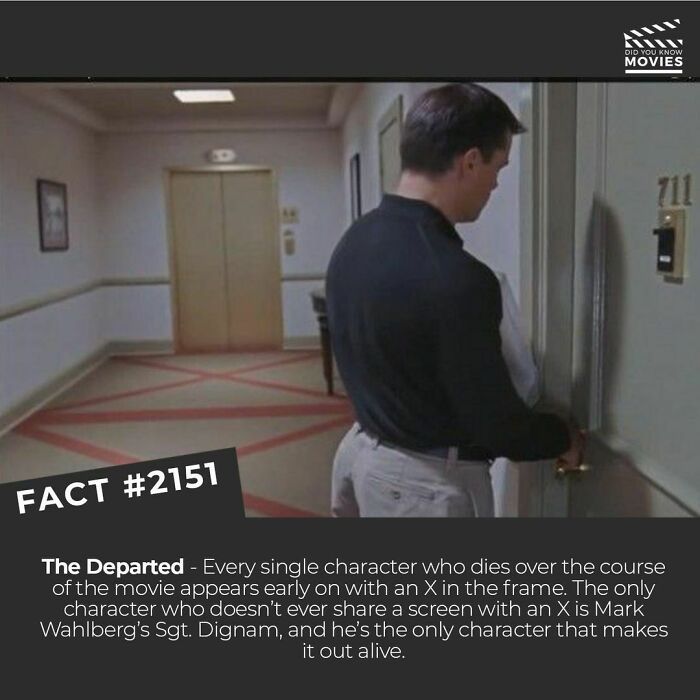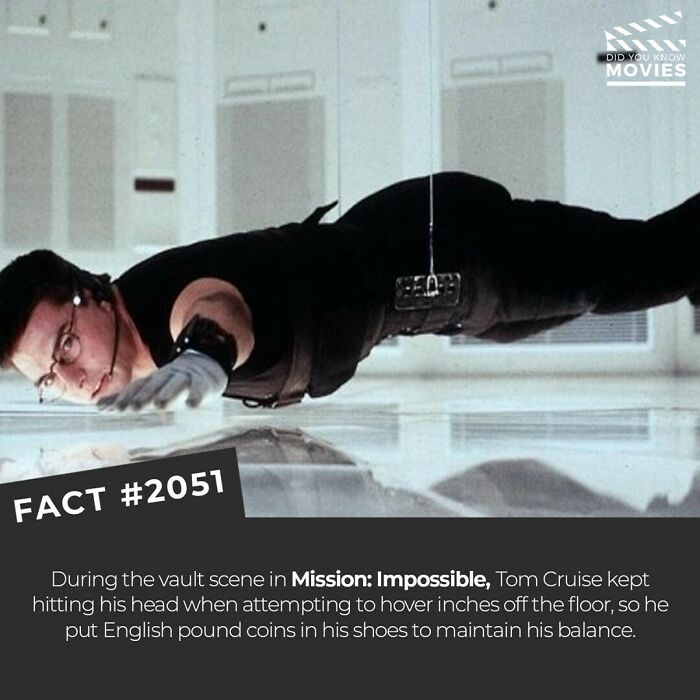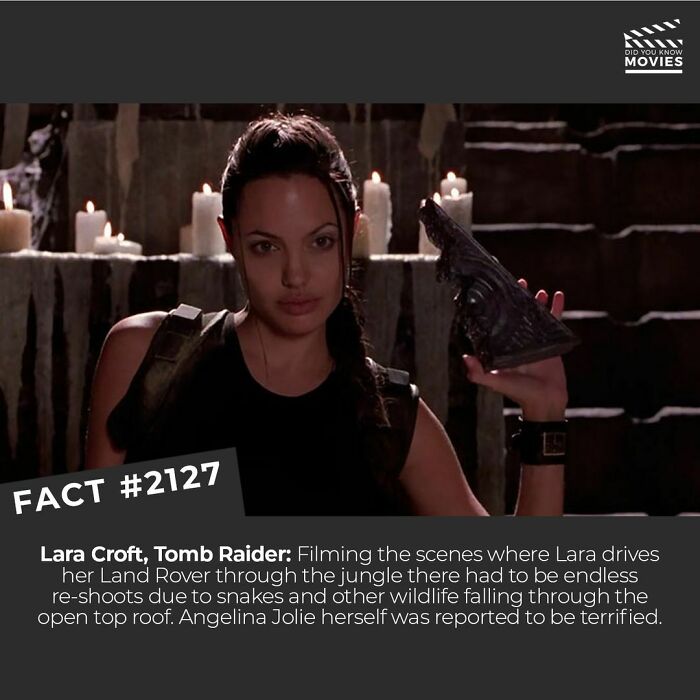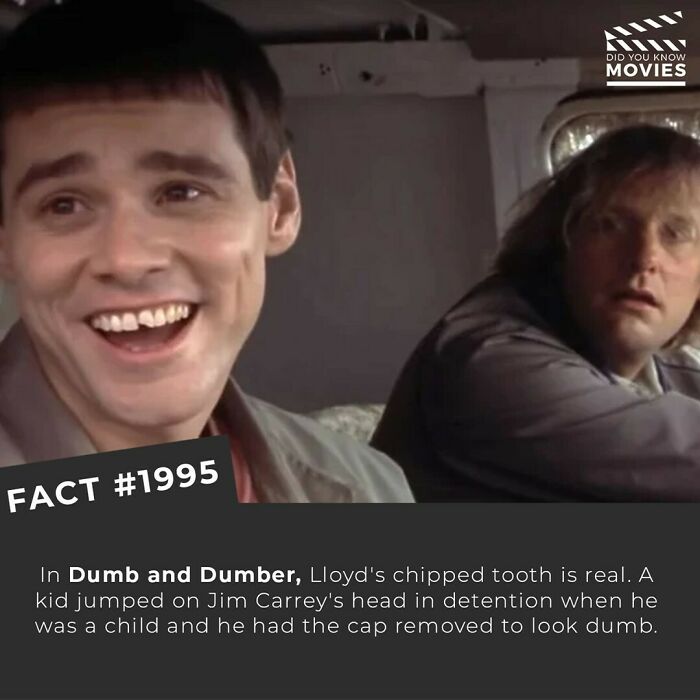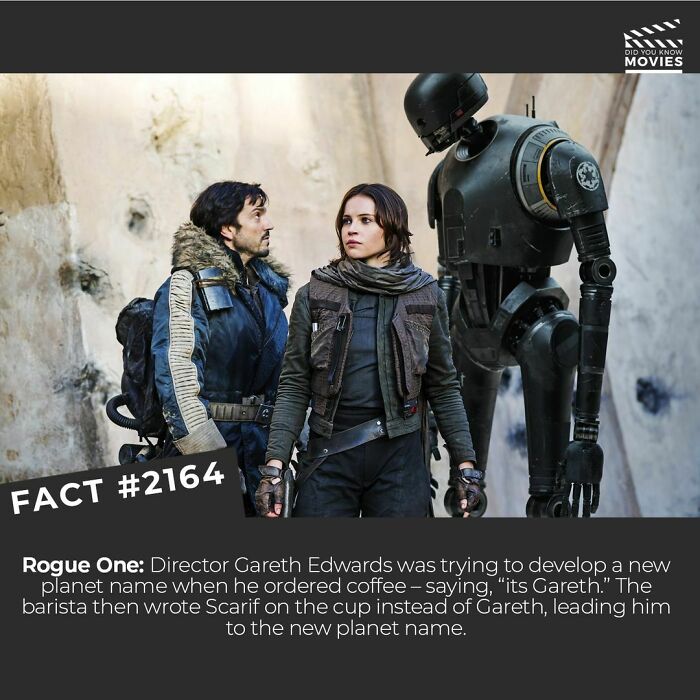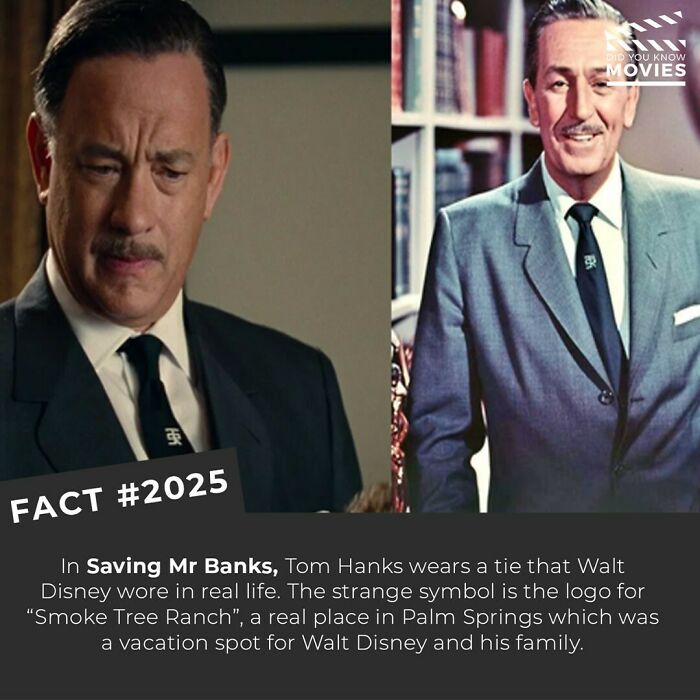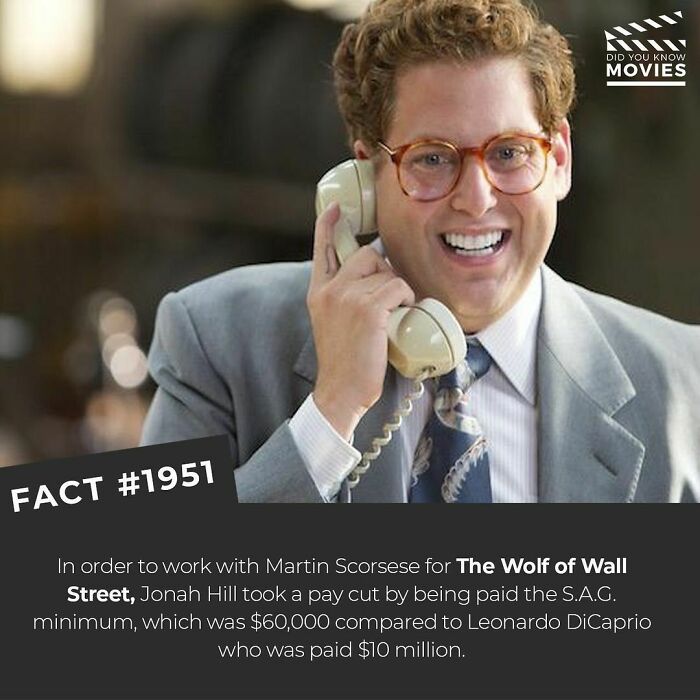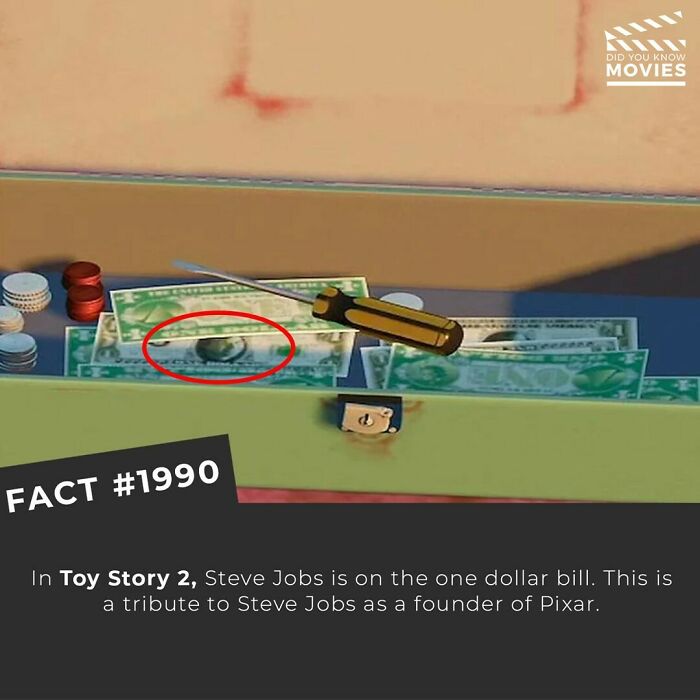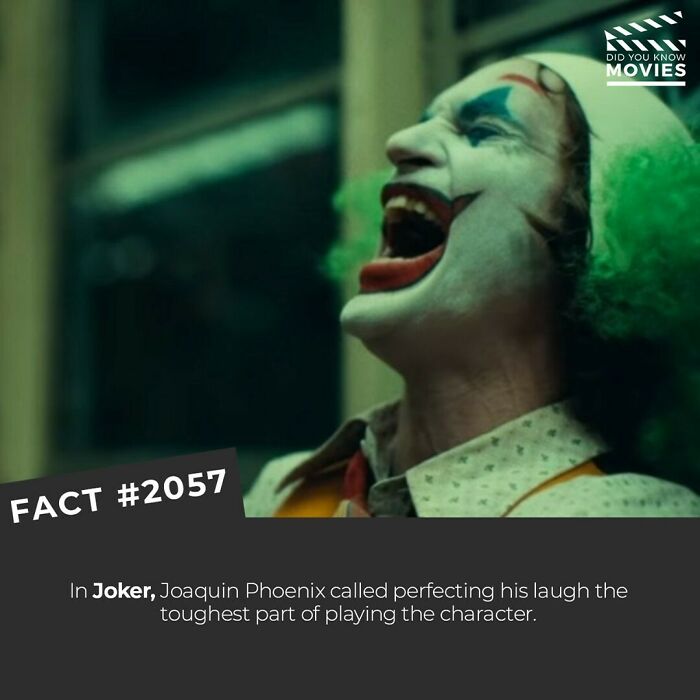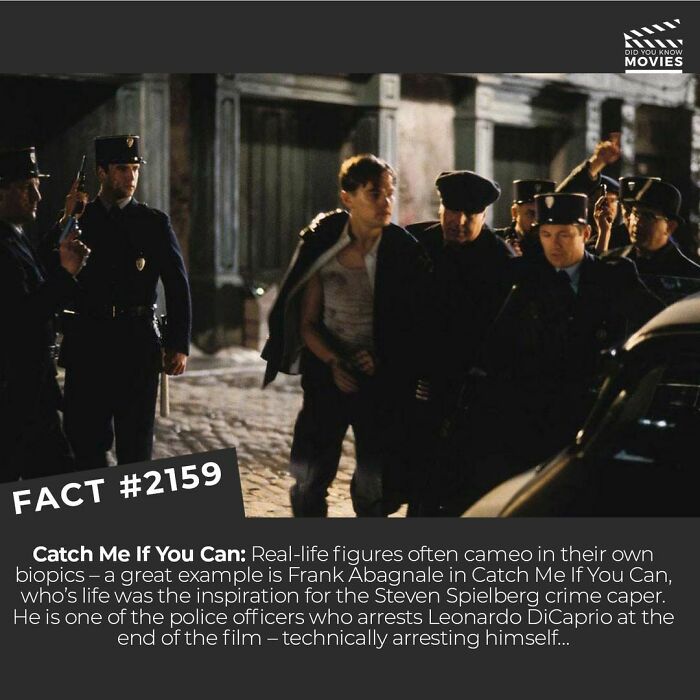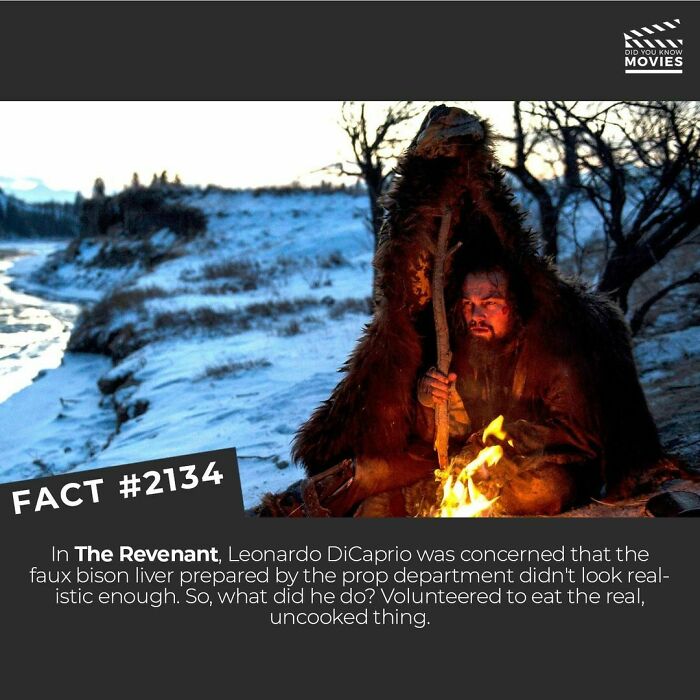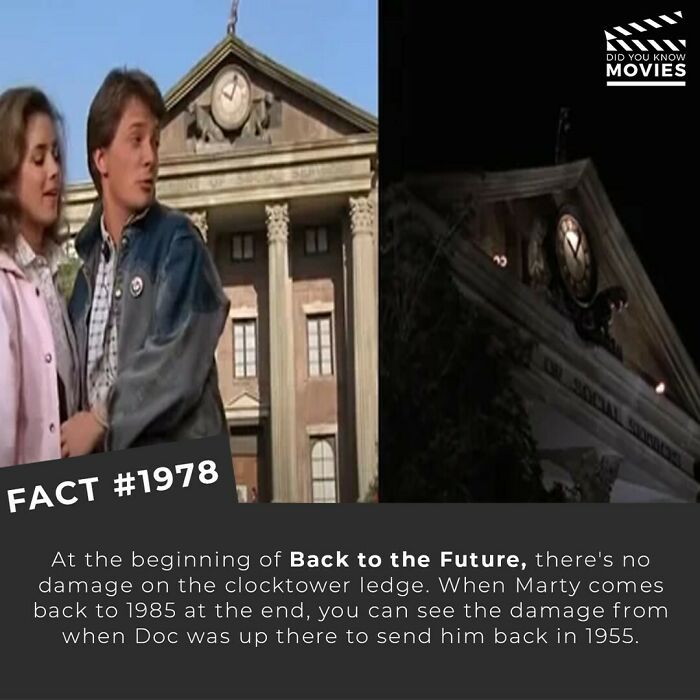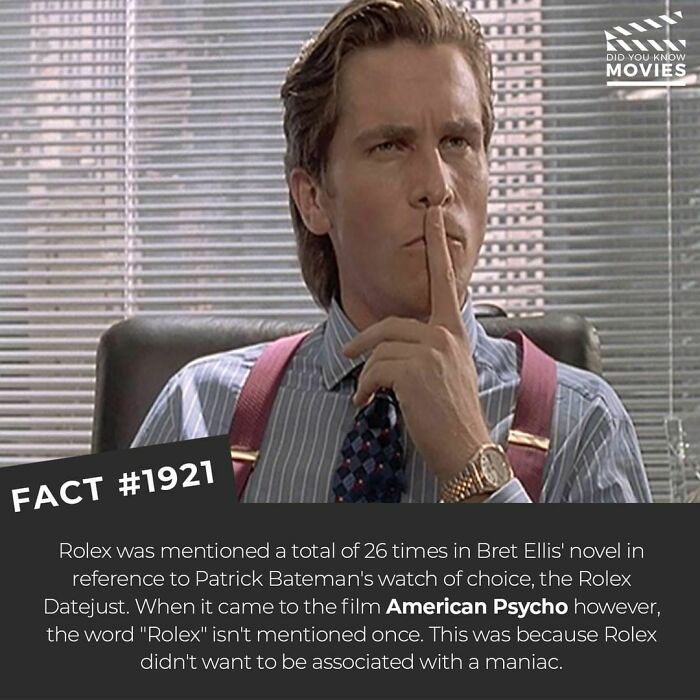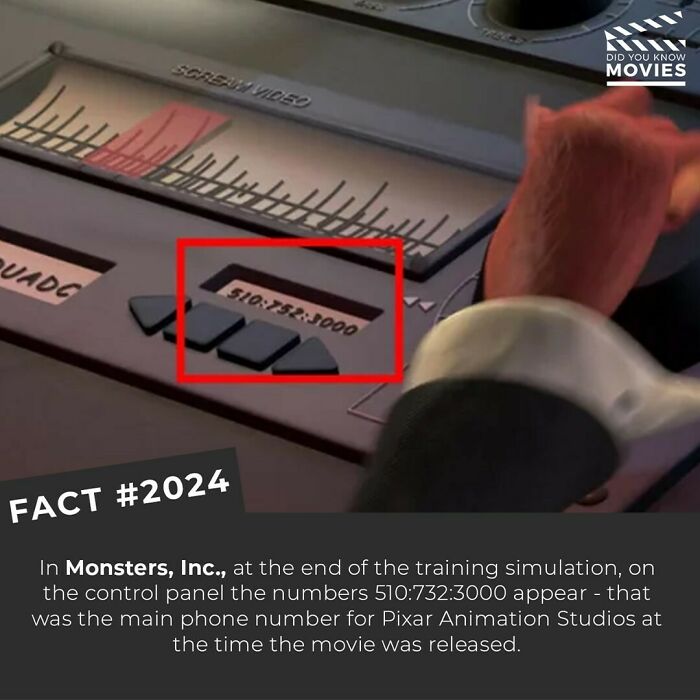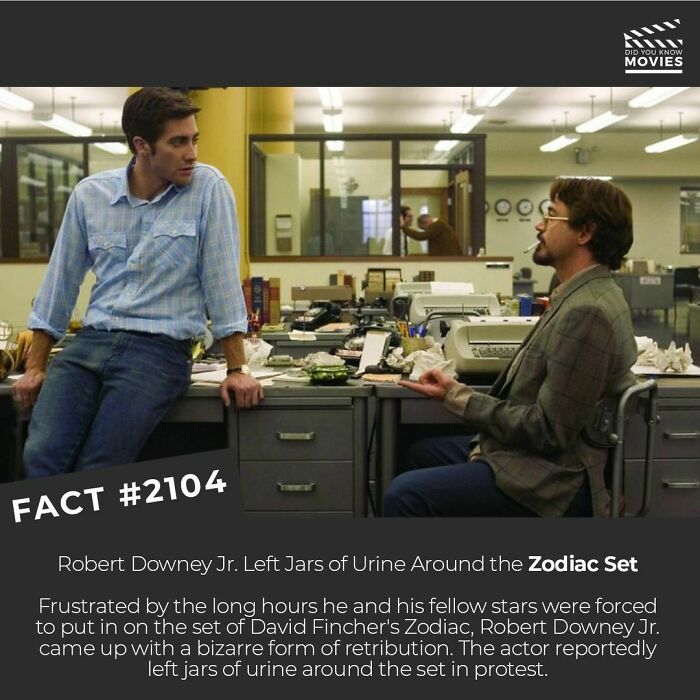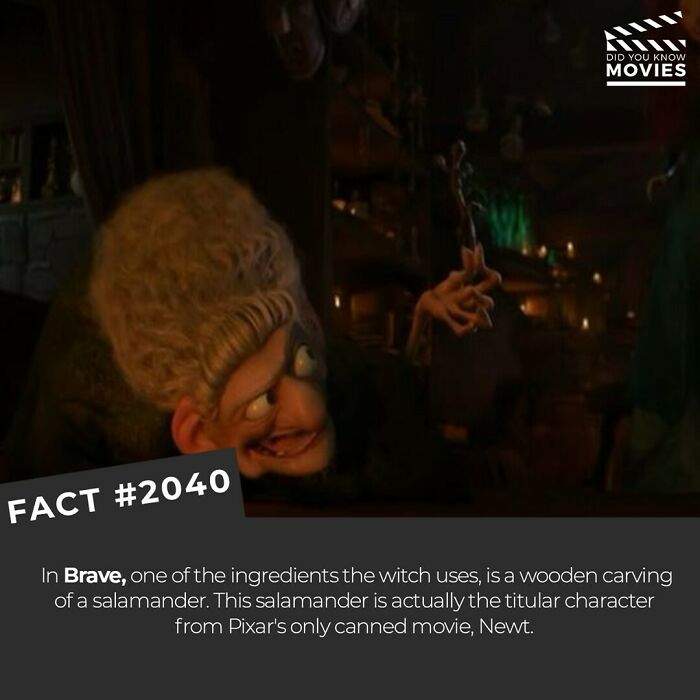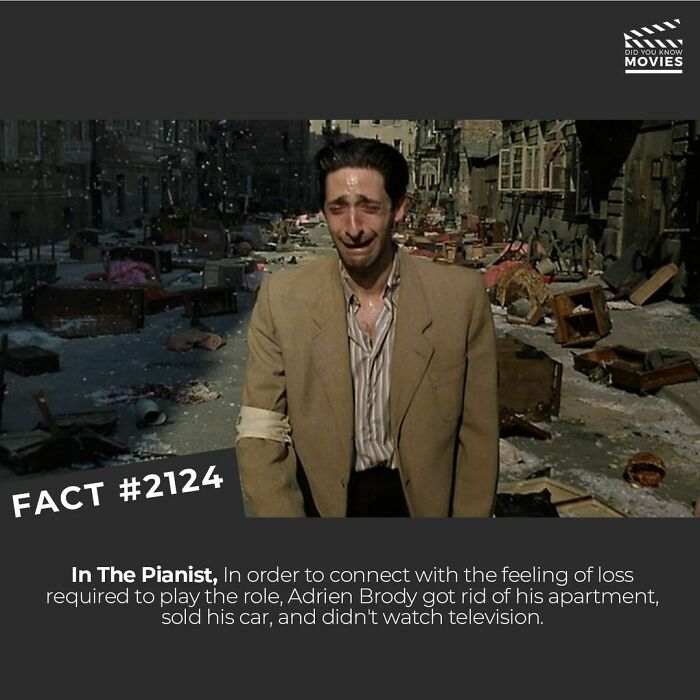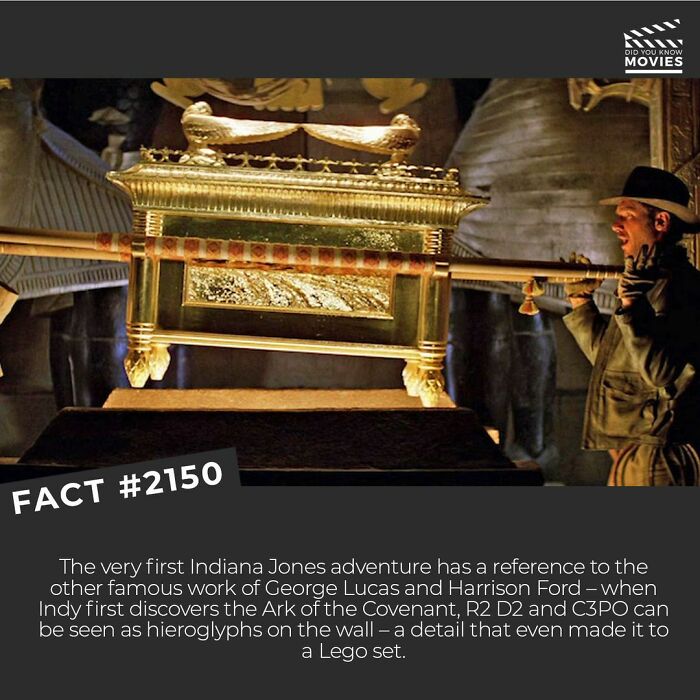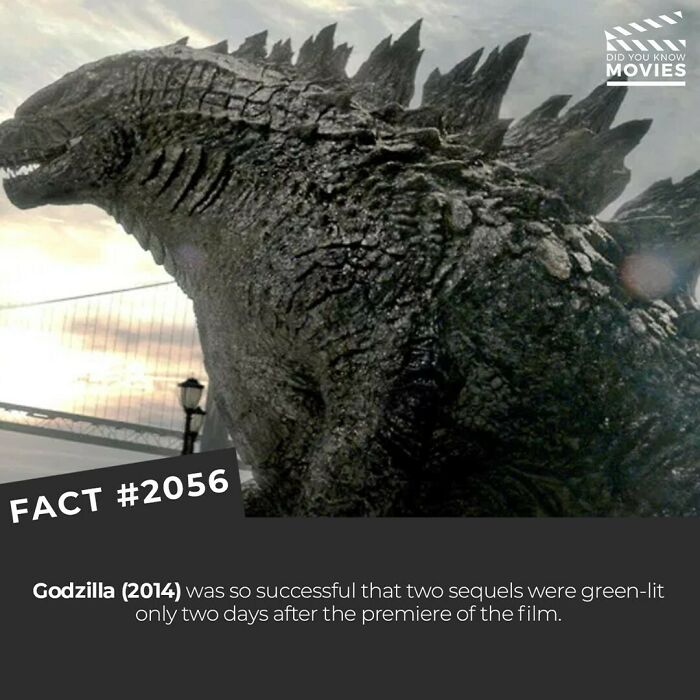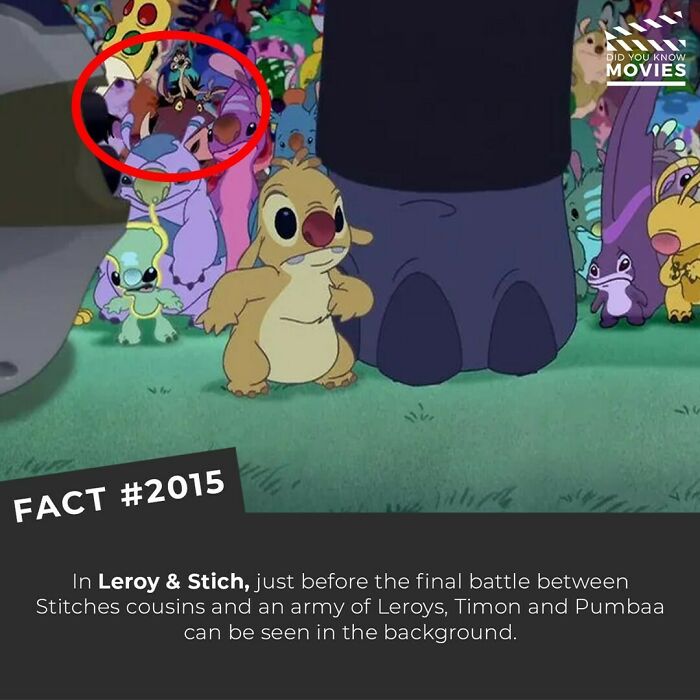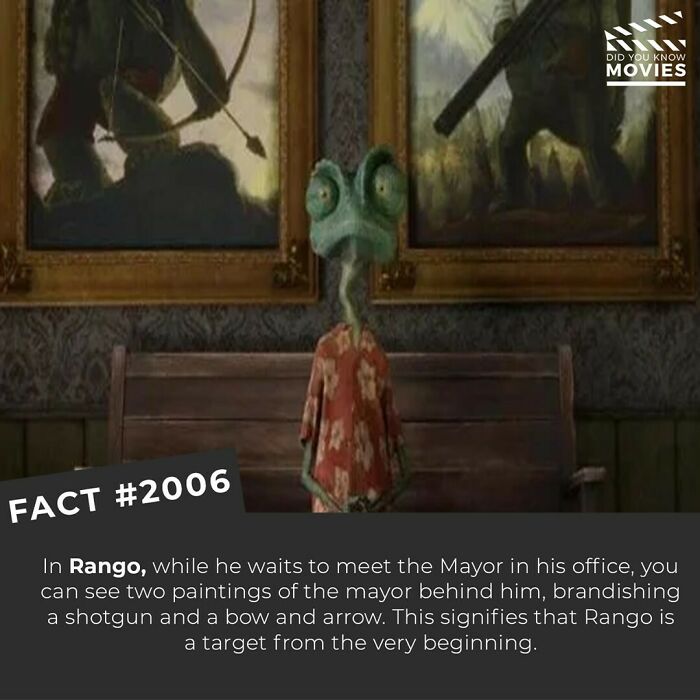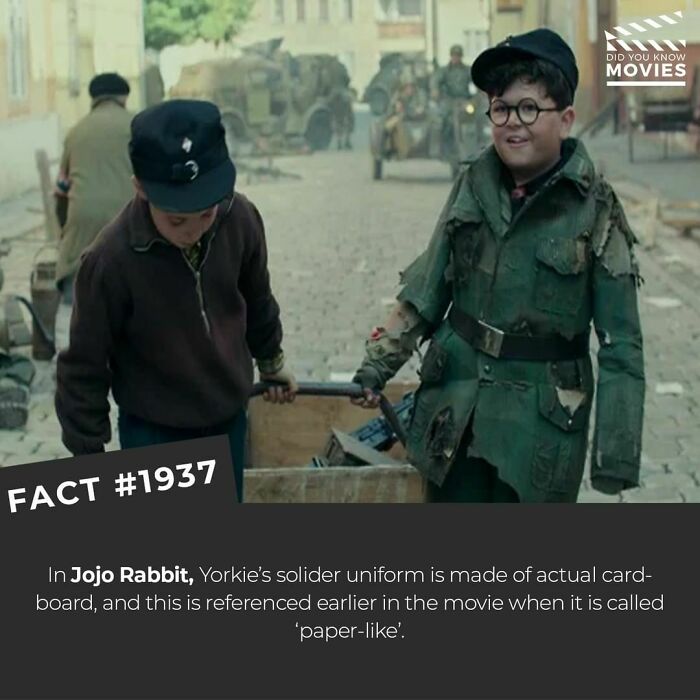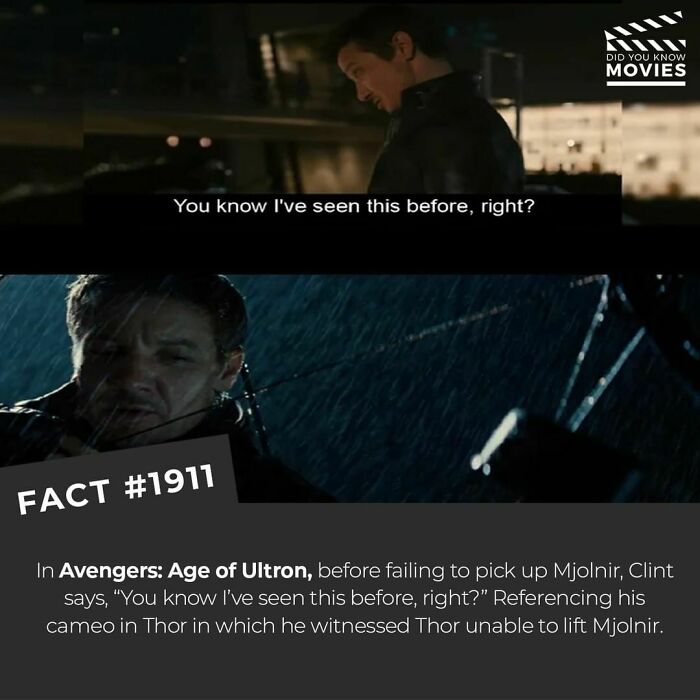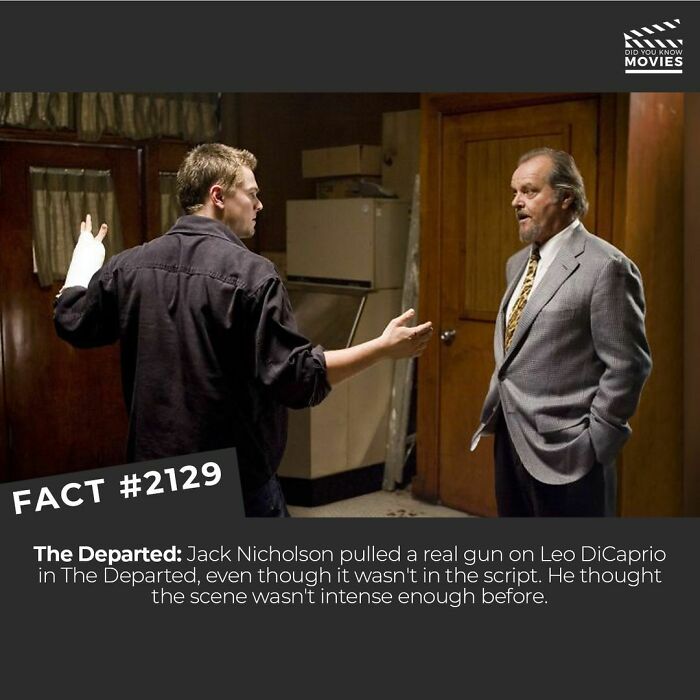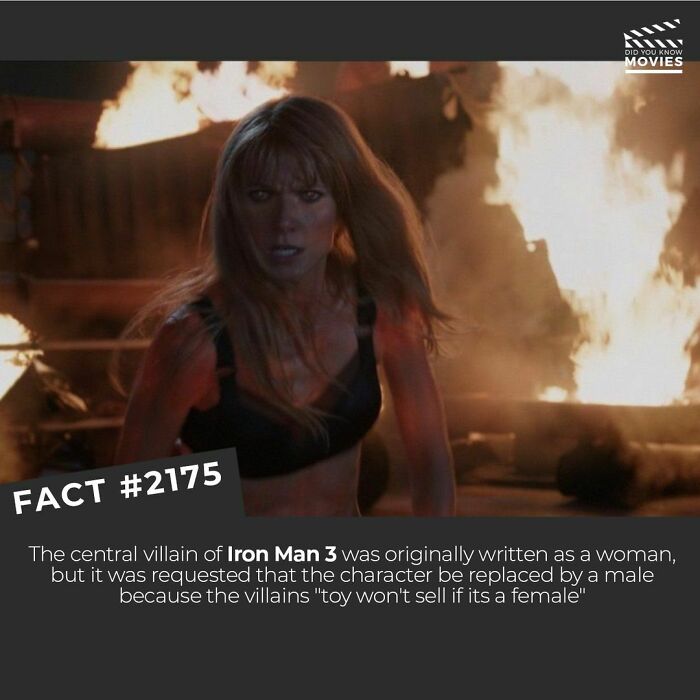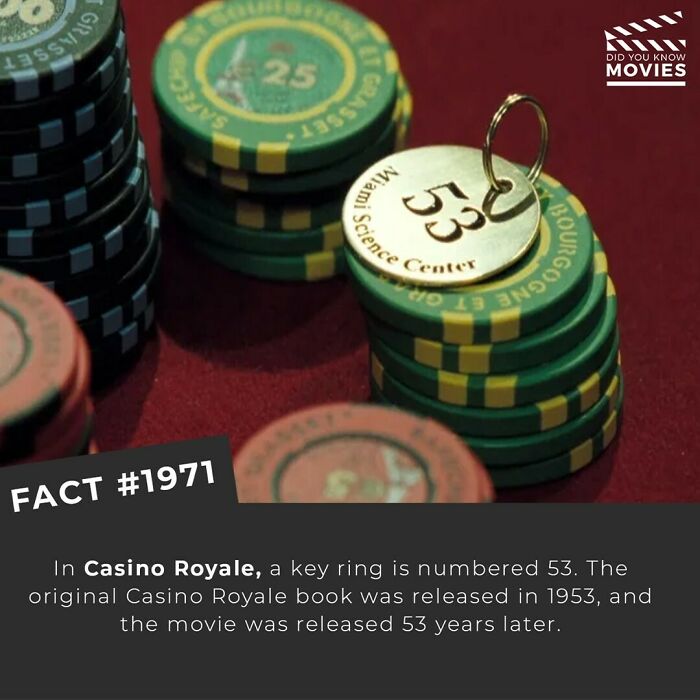
This Instagram Account Shares Little-Known Facts About Films And The Movie Industry, Here Are The 30 Most Interesting
The line “stranger than fiction” can really apply to cinema and filmmaking. Actors, directors and the nitty-gritty of actually shooting a movie has enough drama, crazy tales, and lore that it’s no wonder Hollywood itself is often a setting for films and television. In the pre-internet era, all these tales would be unavailable to industry outsiders.
The “Did You Know Movies” Instagram account shares trivia and fun facts about cinema and filmmaking that you probably never knew. So scroll down, upvote your favorites, and stay until the credits to comment any bits of trivia you happen to know yourself.
More info: Instagram
This post may include affiliate links.
Some bits of film trivia have become so deeply ingrained in popular culture that they start to generate their own memes. Who hasn’t watched through “The Two Towers” without hearing someone say “Did you know that Viggo Mortensen actually broke his toe when he kicked the helmet?” Incidentally, this isn’t the only case of on-set injury, for example, nor the only injury sustained by Viggo, aka Aragorn (he almost drowned during the same film and also broke a tooth.)
In the first Lord of the Rings film (The Fellowship of the Ring, if you somehow aren’t familiar,) actor Sean Astin, who played fan-favorite Samwise Gamgee, stepped on a large shard of glass during the scene where he chases Frodo who is attempting to sail away. He had to be evacuated by helicopter after losing a substantial amount of blood. Orlando Bloom managed to break a rib when falling from a horse and to add insult to injury, it became an inside joke due to his constant complaining about it.
Like these stories from the filming of the Lord of the Rings, many of the fun facts in this article are the result of real stunts or practical effects. This is not to say that CGI doesn’t have a place in creating great scenes. The Lord of the Rings and, more visibly, the Matrix both used a combination of the two to achieve the scenes and visuals they wanted. The Matrix in particular was revolutionary in its use of post-production CGI, often to remove the wires the actors were attached to while flying through the air.
Not me going to watch Hercules for the first time only so I can watch this scene
Many studios do like CGI, as it entails fewer costs, less principal photography (which means actually filming things, not taking pictures of the head of a school), and fewer risks. Actors are a lot less likely to get injured, like in the aforementioned stories, if all the “action” is generated by a computer. Filming costs are still quite high, for example, even a decade ago were up to 100 '000-250' 000$ a day.
A113 is also a Pixar Easter Egg. It is a classroom number at California Institute of the Arts where many of the animators at Pixar learned their trade.
When you factor in the length of time it takes to film, it's easy to see how these costs pile up quickly. Feature-length films can shoot for around a hundred days, with some taking even longer. “Eyes Wide Shut” was filmed for over 400 days, as director Stanley Kubrick was a notorious perfectionist. Studios also have to manage the potential risk of needing reshoots.
When the grueling job of filming is complete, it was (and still is) common to say that it’s a “wrap.” This slang goes back to the 1920s, and traditionally, the crew or at least the cast would enjoy a “wrap party” to celebrate the end of filming. Whether or not actual wraps are served is unknown. The actual etymology of “it’s a wrap” is unclear, as some sources point to it meaning “wind, reel, and print,” though these things were not actually done with pre-digital film. Instead of being printed and reeled, film would be “canned,” hence the term “it’s in the can.”
And that's why Henry Cavill is such a great actor, he actually cares about the source material of the project he works at
Even after the editors have looked over the film, producers will still show what they have to a test audience before it goes to the public. At times, this can even lead to more reshoots. For example, Shaun of the Dead got roughly 15 seconds added to its final cut after test audiences disliked the ending for being too “abrupt.” Somehow, these fifteen additional seconds were enough to vastly increase the average score the film was given.
also in most movies with dogs they have to CGI their tails because they keep wagging them!
Finally, at long last, the film goes to distribution, unless there is some outstanding issue and the production company kills it. For most of the films that we view, the first step is a cinema release. The number one movie-going nation is South Korea, where people viewed an average of 4.12 movies a year, compared to the number two spot for the US (3.88 a year.) Normally, there would be a theatrical “window,” where the film was only available in cinemas and people would have to wait a few weeks to see it at home. Nowadays, streaming services have changed the media landscape from top to bottom. If you want to learn more about interesting cinema facts, check out our other articles here and here.
Honestly one of the best dad-son relationships ever, I love this dad
A universal theme song, that everyone knows, something bad is going to happen. Without it, I don't think Jaws would have been that scary.
I've lost count of the number of times I've watched this film and I still cry everytime she reads that damn poem.
The movie was based on his book, The Snow Queen, hence the characters, Hans, Kristoff, Anna, Sven.
1) Almost all spiders are venomous. 2) Tarantulas will only bite you in circumstances where they are being held against your body by something else, like clothing. 3) Tarantula bites are mild, as in wash and maybe paracetamol at a push mild. 4) The biggest danger of a tarantula are the hairs if they flick them, they are barbed and really hurt. 5) Yes I have experienced both, because of other people being mean with them, the hairs are much worse. 6) They aren't going to actively hurt you, they only will if you bother them, they are docile when held and very light.
this part is so powerful tbh. it goes from happy to very dark very fast, it’s like being hit with a train
Well I now know who I’m dressing up as for Halloween!
How about Captain Kirk mask, because the Michael Myers mask is just white painted Captain Kirk
I believe Connery would call it trouser-less. Pants-less is a different matter entirely.
And I thought it was a reference to Stallone's character in Demolition Man
I don't think Robert Downey Jr could have made a comeback if social media and mobile phones was a thing in the 1990s. He had a horrible addiction problem, allegedly got drugs from his dad at 6 years old, and was also sentenced to 3 years in prison but ended up serving only 1 year. The director of Ironman had to fight HARD to cast a former drugaddiced, untrustful looser like RDJ... I don't think an actor would bounce back from that now.
BUT WHEN SHE BREAKS UP WITH HER BOYFREIND SHE EATS MEAT AGAIN YALL REMEMBER THAT??
RIP, Sid. He had a good life as a bin man who loved music. And I guess moved on to become a DJ at some point between them and dying.
I love Maggie Smith. She was going through treatment for breast cancer during filming for HP6, she thought the fans wouldn't be happy with another actress playing her role.
I thought this was common knowledge? they also say countries that are waayy further off as well...
I think I may be the only person who didn't find Inception all deep and philosophical. I was bored to tears during that movie.
Organ failure vs millions of dollars all for the sake of entertainment... hmmm
Not as good as Infernal Affairs. I think details like these are too literal, but that's my opinion
I actually hoped Tai Lung would return in a sequel with a redemption arc. Oh well.
My tooth is chipped exactly like that! Thankfully my brother is a dentist :)
Tom Hanks is incomparable. He is truly a master of his craft. Who else could believably play Mr. Rogers and Walt Disney and also be in a silly movie like Turner and Hooch. He is magical!
some actors want to work with others so much, they'll take a pay cut. Bruce Willis was uncredited in the movie Four Rooms (so they could pay him scale rather than what he usually makes) so he could work with Tarantino.
Yeah because I know exactly how a bison liver should look like
Man, I think Rolex is rich enough to be associated with maniacs, sociopaths, and venture capitalists.
I’m kinda judgmental of method acting. If you’re not a good enough actor to step onto a role convincingly without having to do crazy s**t and treat cast & crew in crazy ways, maybe there’s a ton of other actors out there who can. One’s job is “to act like” and if one needs to “become” in order to express, one isn’t actually acting. A good actor can pretend their finger hurts without having to slam it in a damn door.
He's quite a chonker! I don't remember Godzilla being so hefty back the 80's. :)
My favourite movie trivia is missing. Due the motorbike chase scene in The Great Escape, Steve McQueen is dressed as one of the German soldiers chasing his own character.
Colin, I heard it differently; that he wouldn't do the movie unless they let him do his own jump over the fence getting away...
Load More Replies...In "Gladiator", Maximus names his two horses as Scarto and Argento. This translates as Trigger and Silver.
Please some kind person tell me how to get past the guardian jazzhands to let me be able to be able to see the actual presentations?? Also is it possible to see other of these? Thank you
My favourite movie trivia is missing. Due the motorbike chase scene in The Great Escape, Steve McQueen is dressed as one of the German soldiers chasing his own character.
Colin, I heard it differently; that he wouldn't do the movie unless they let him do his own jump over the fence getting away...
Load More Replies...In "Gladiator", Maximus names his two horses as Scarto and Argento. This translates as Trigger and Silver.
Please some kind person tell me how to get past the guardian jazzhands to let me be able to be able to see the actual presentations?? Also is it possible to see other of these? Thank you

 Dark Mode
Dark Mode 

 No fees, cancel anytime
No fees, cancel anytime 






